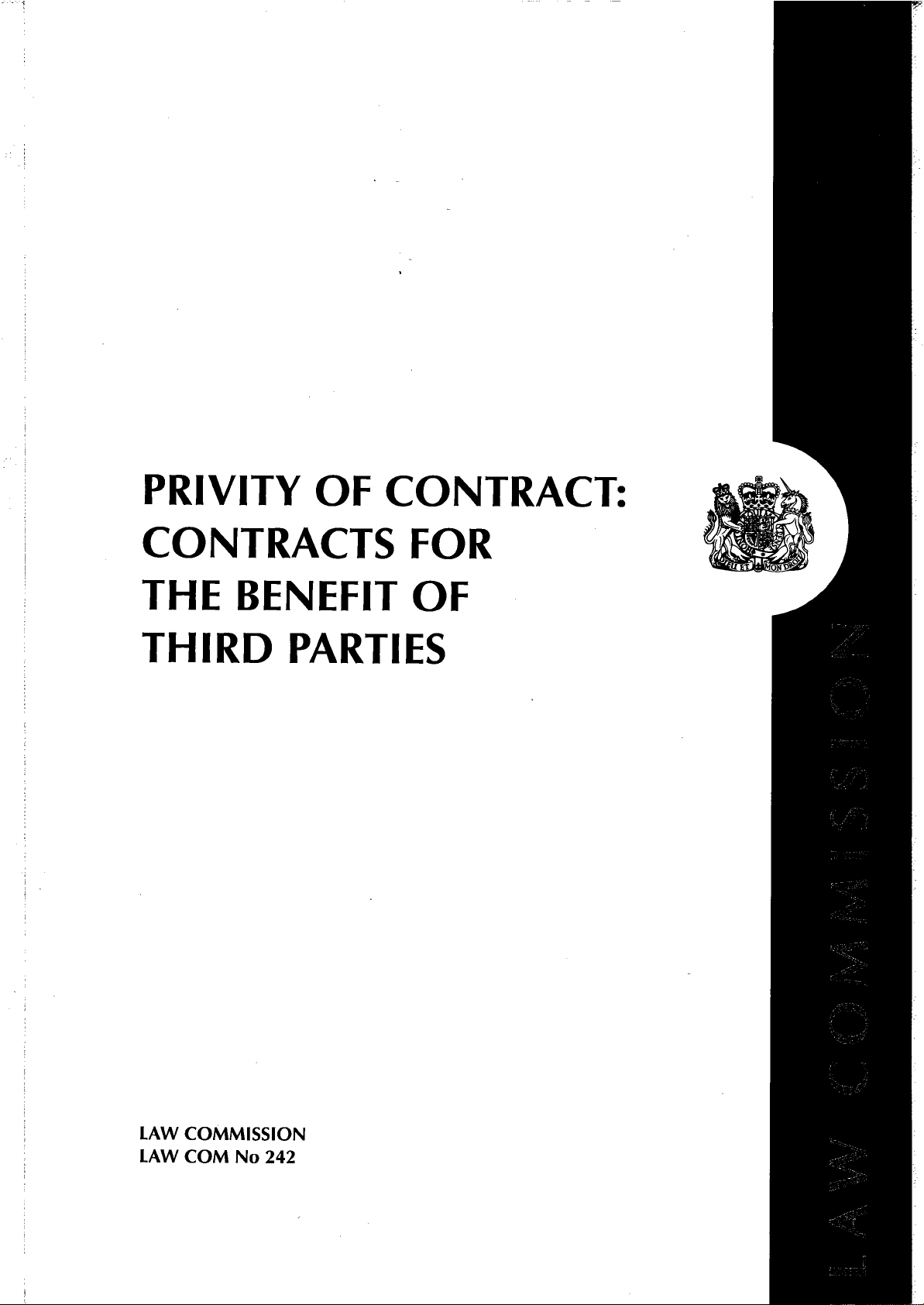

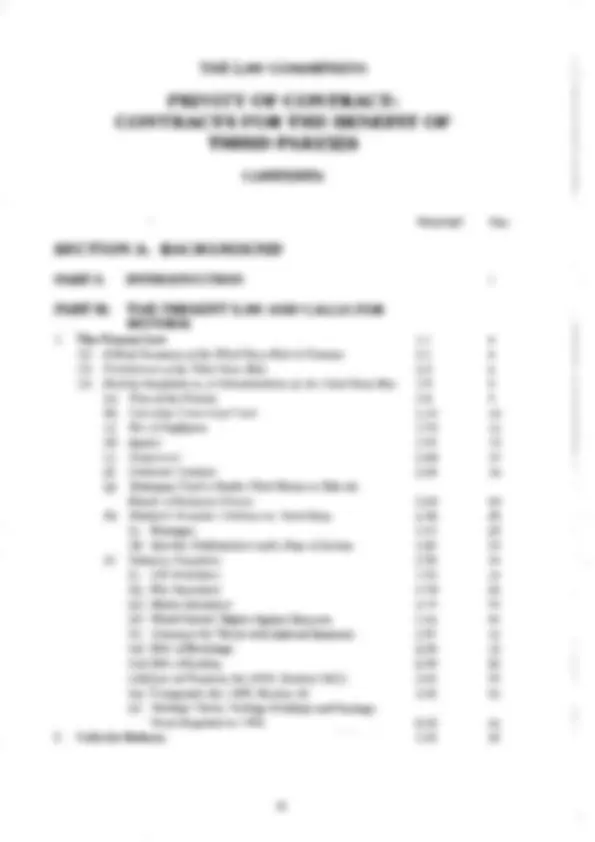
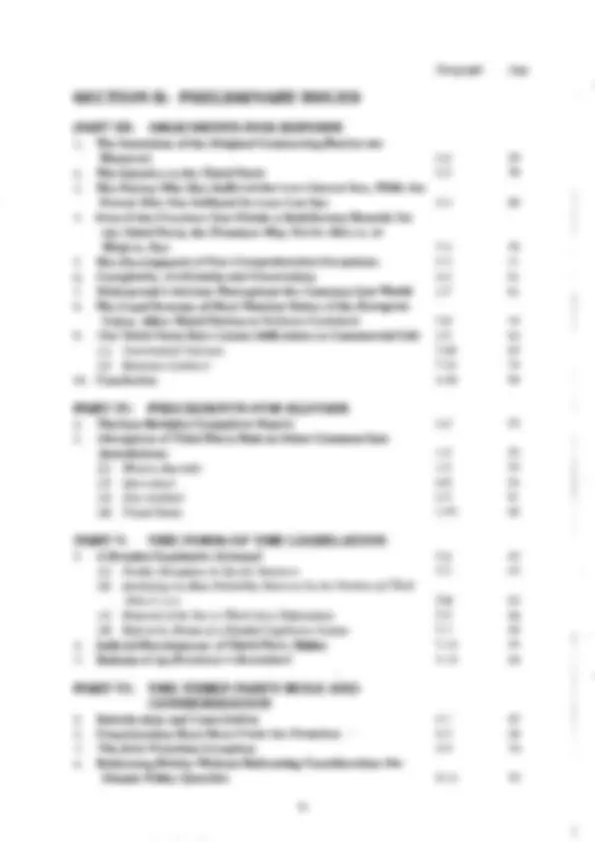
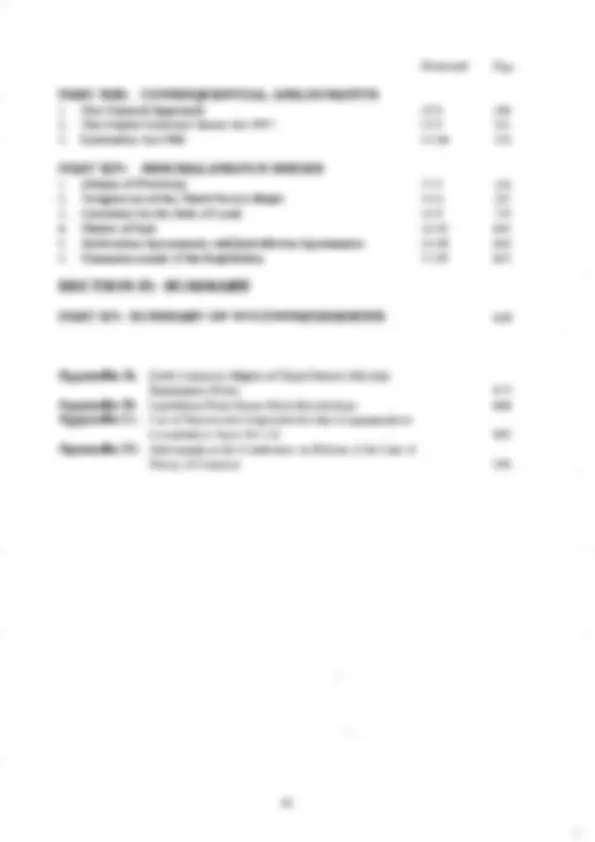
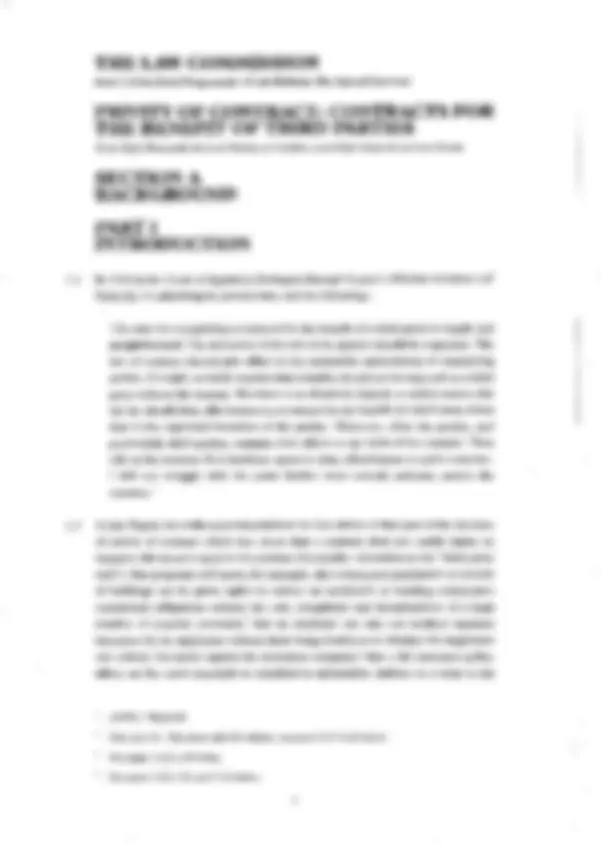
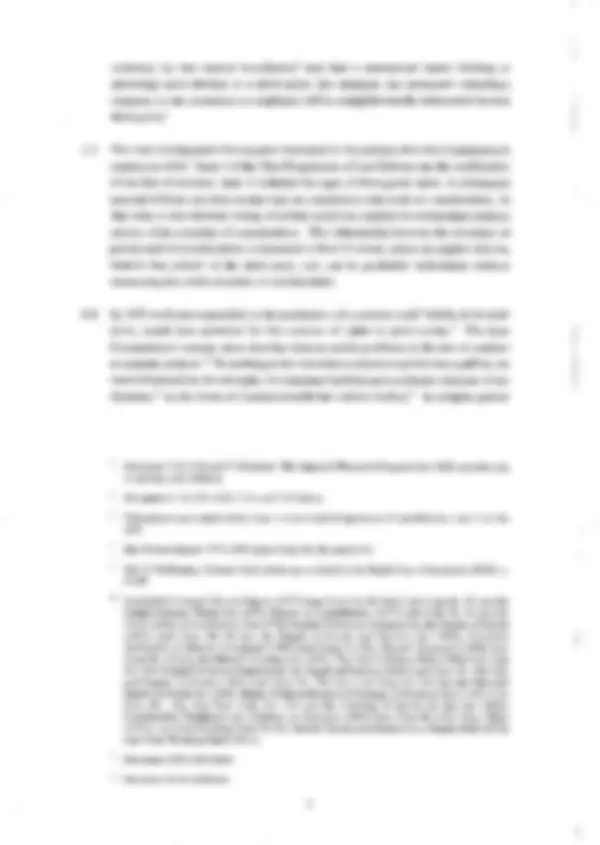
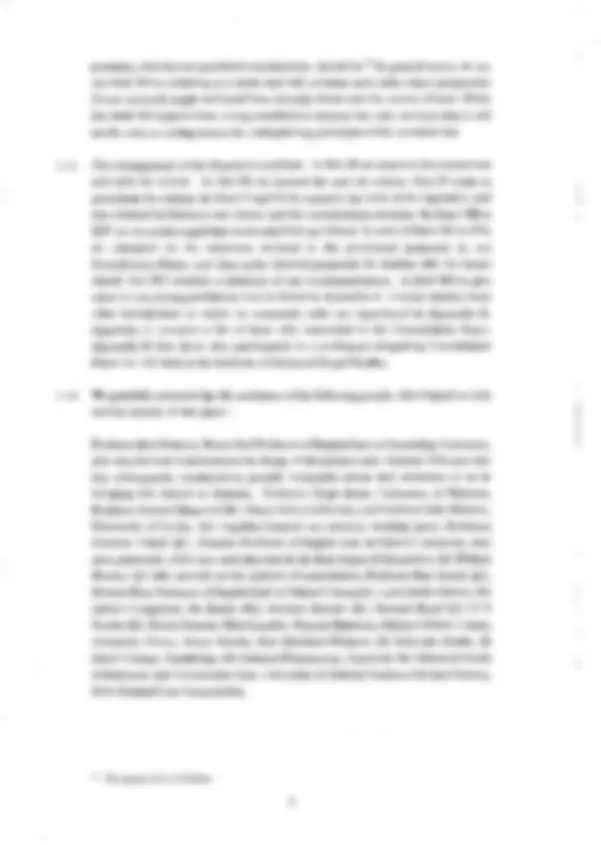
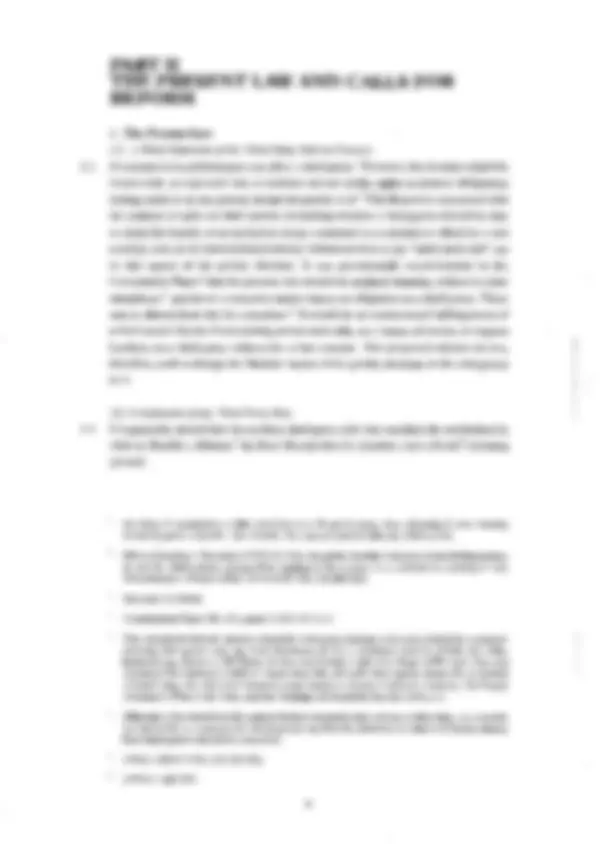
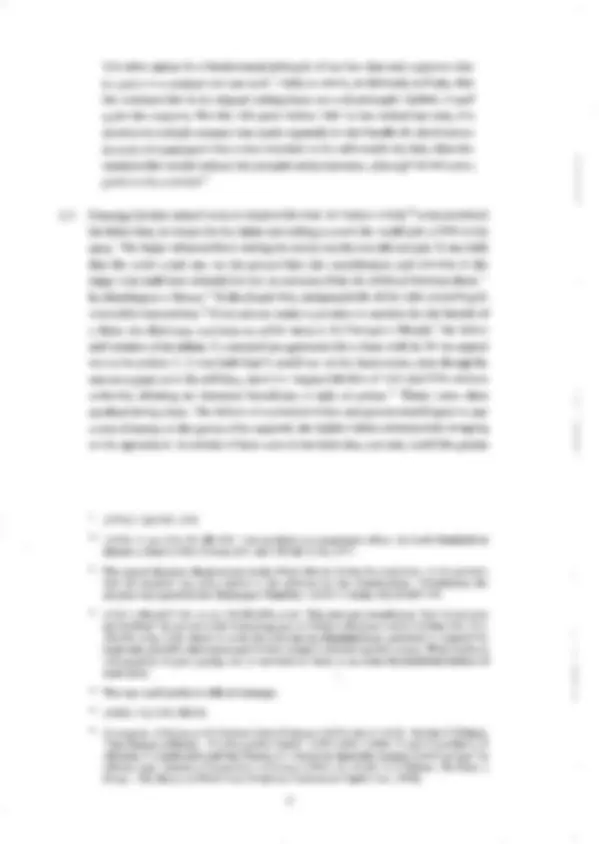
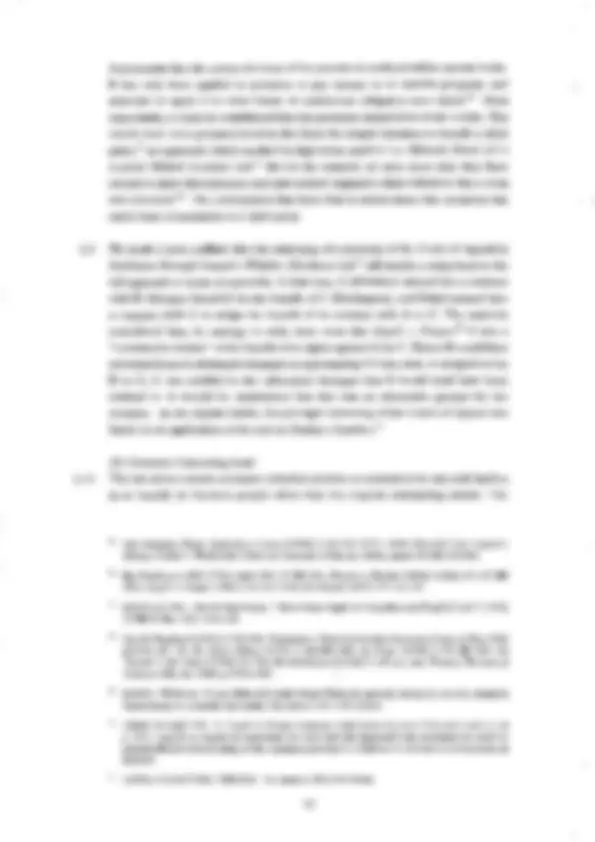
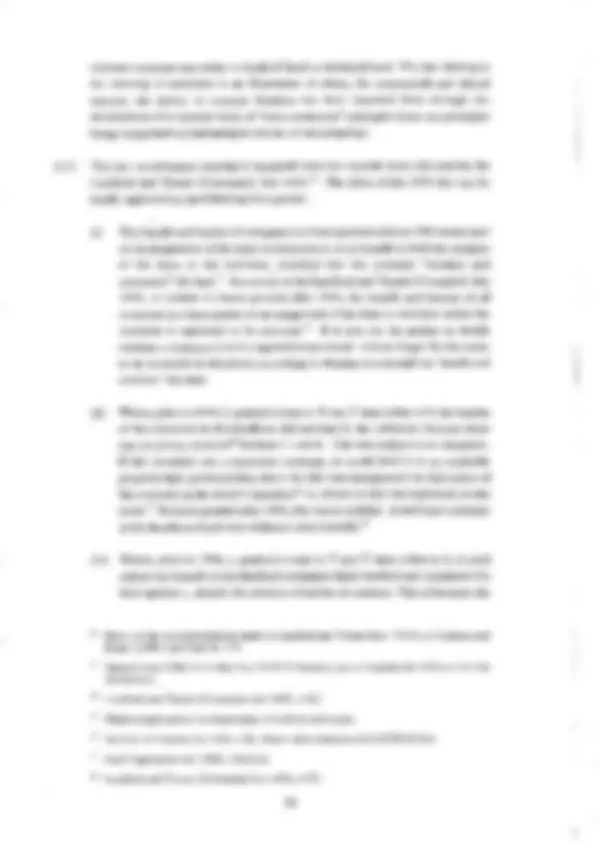

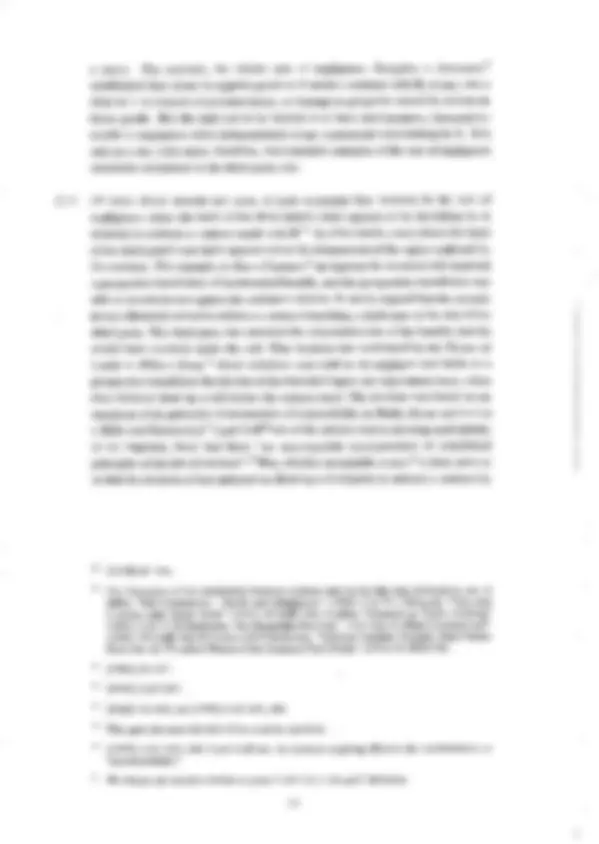
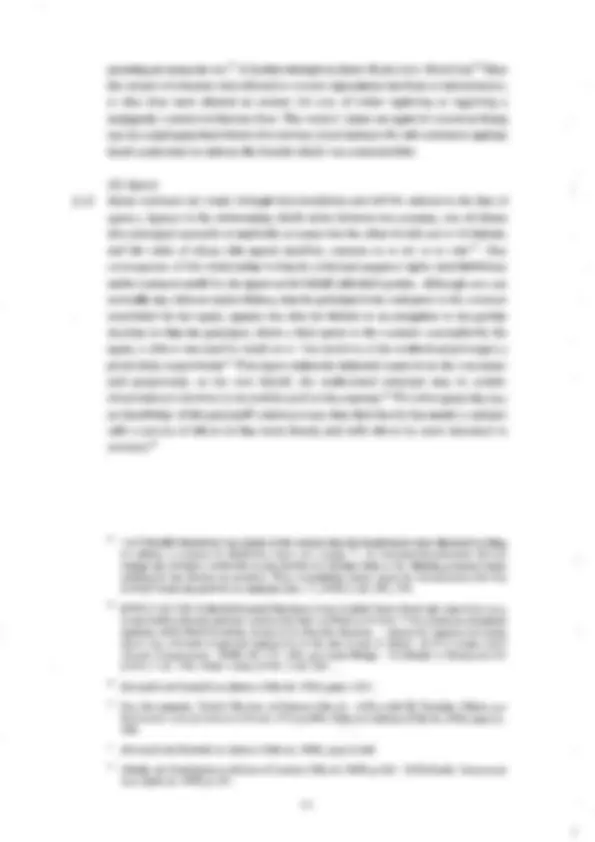
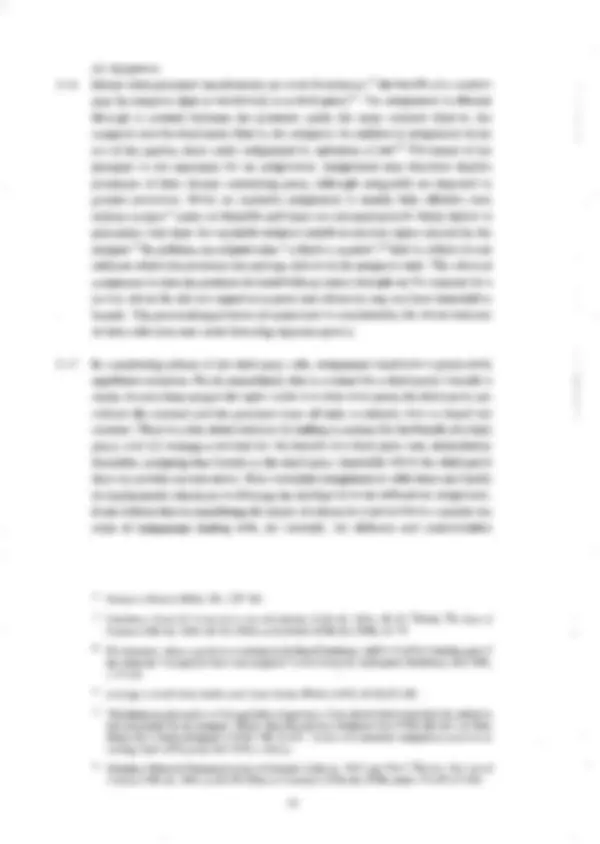
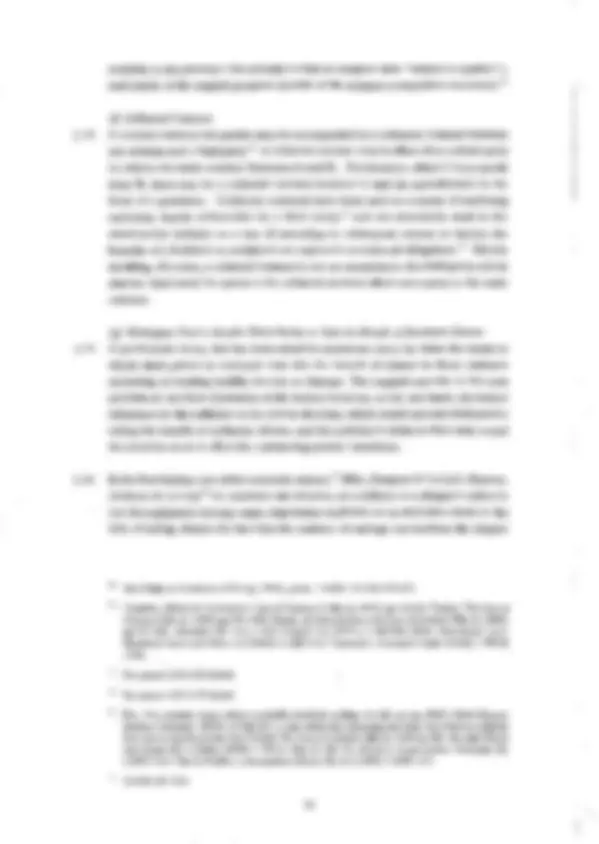
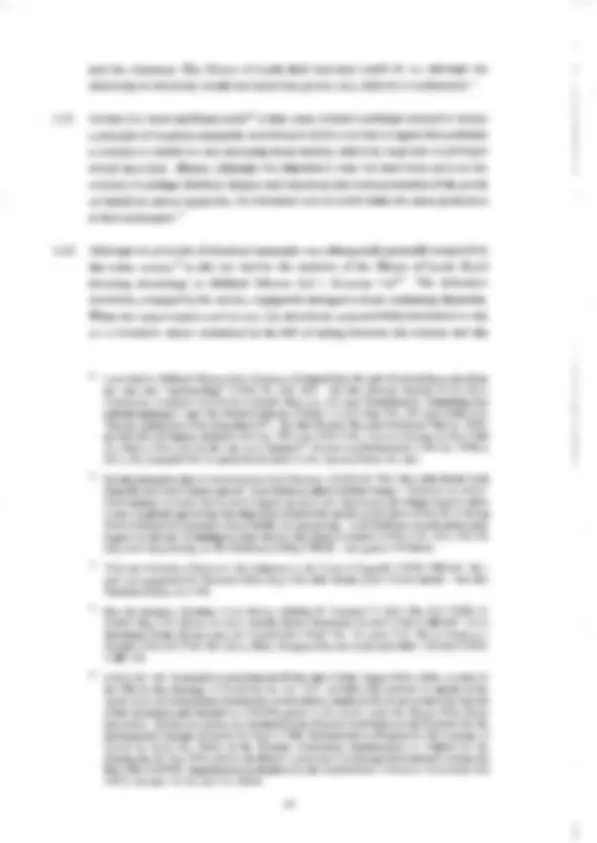
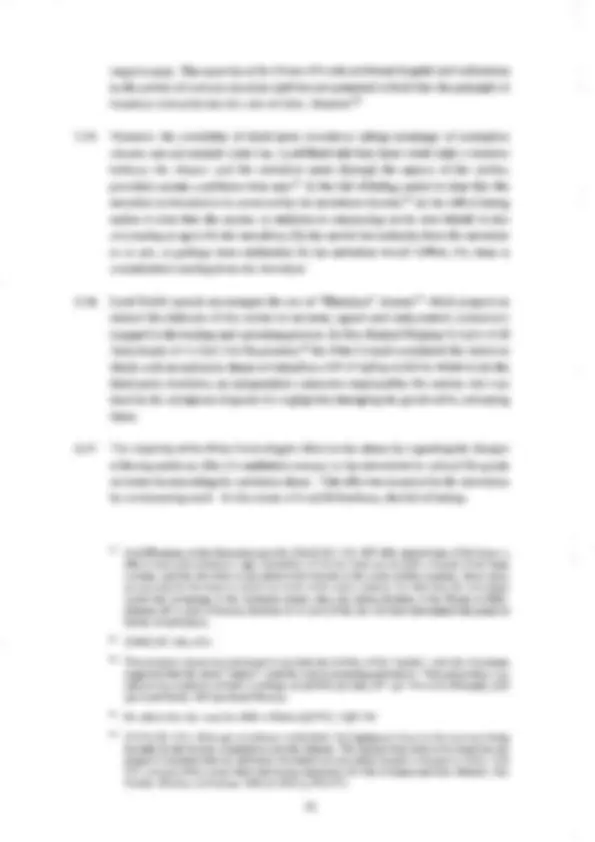
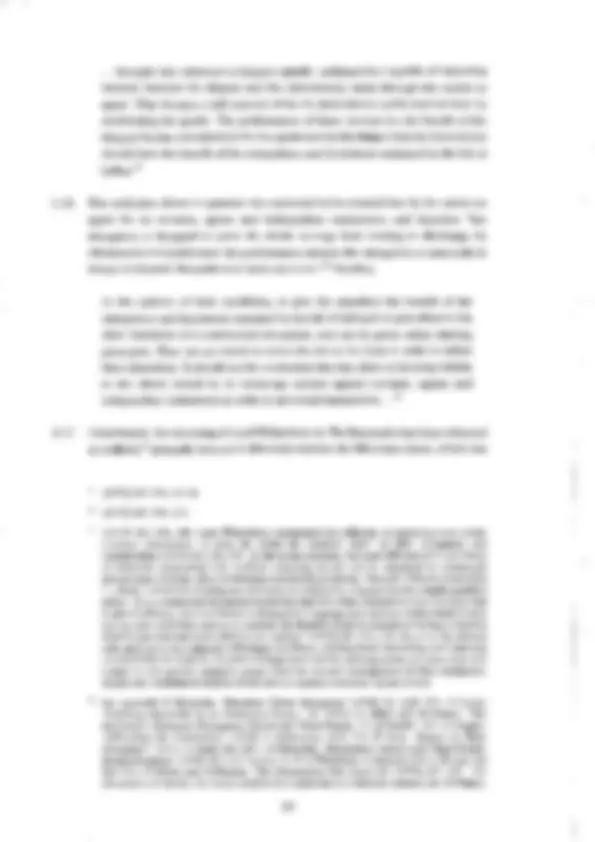
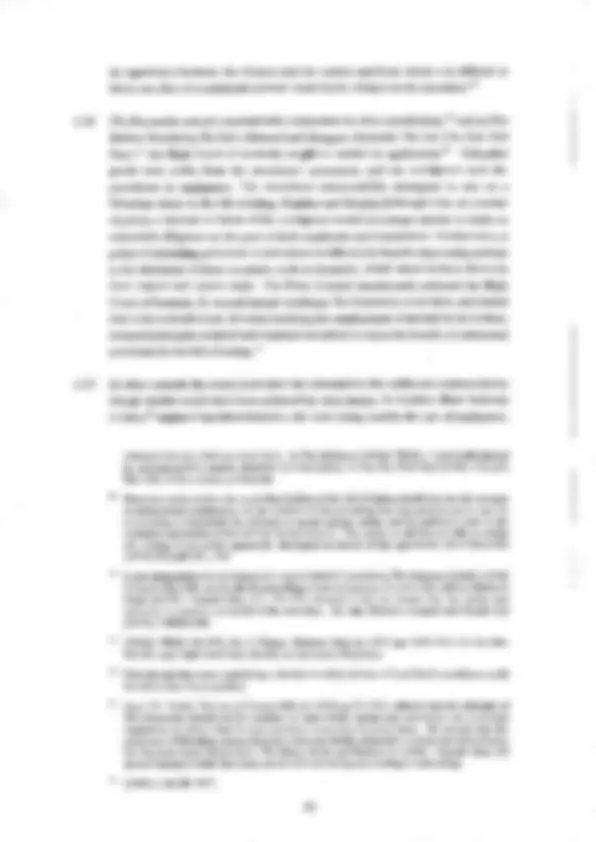
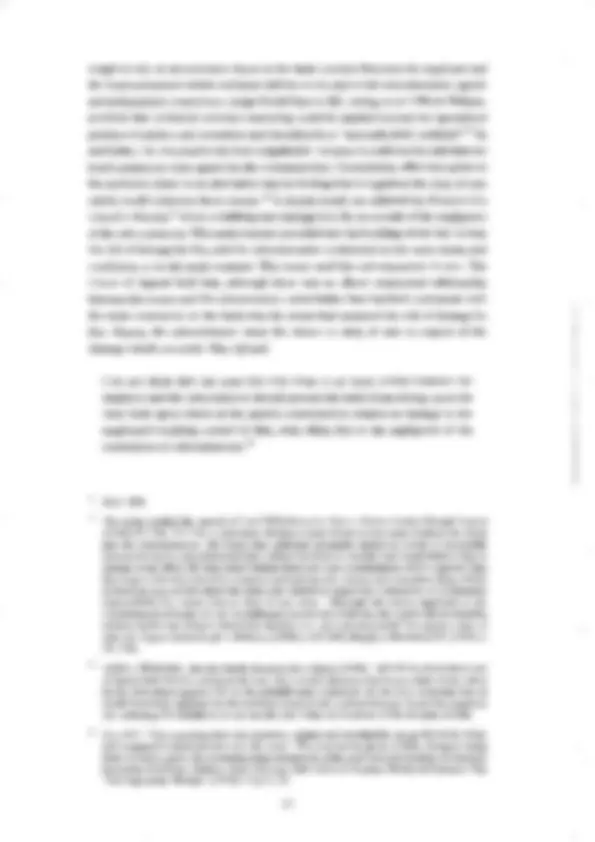
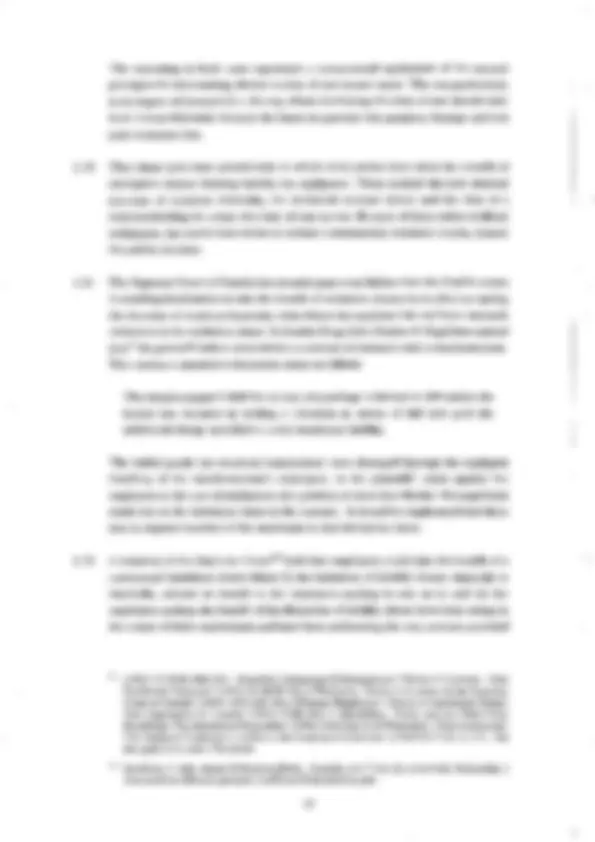
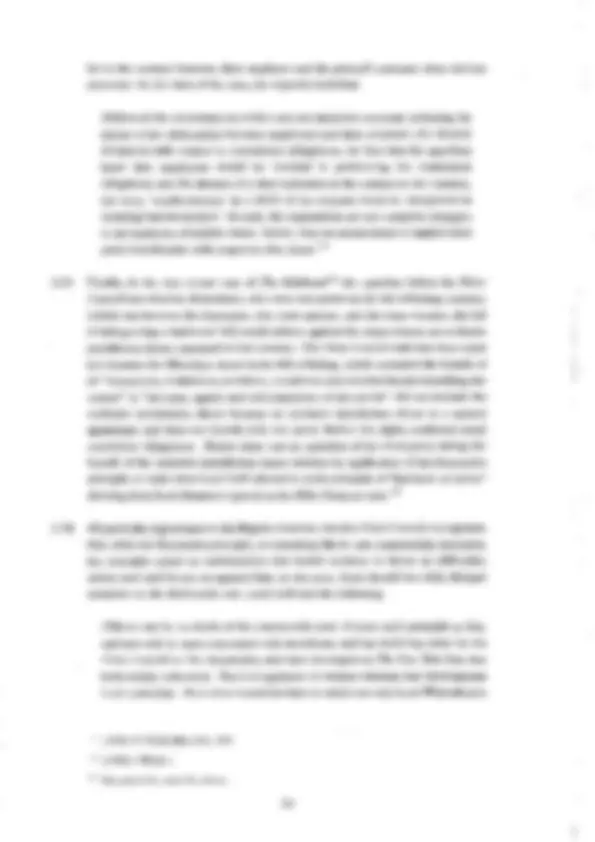
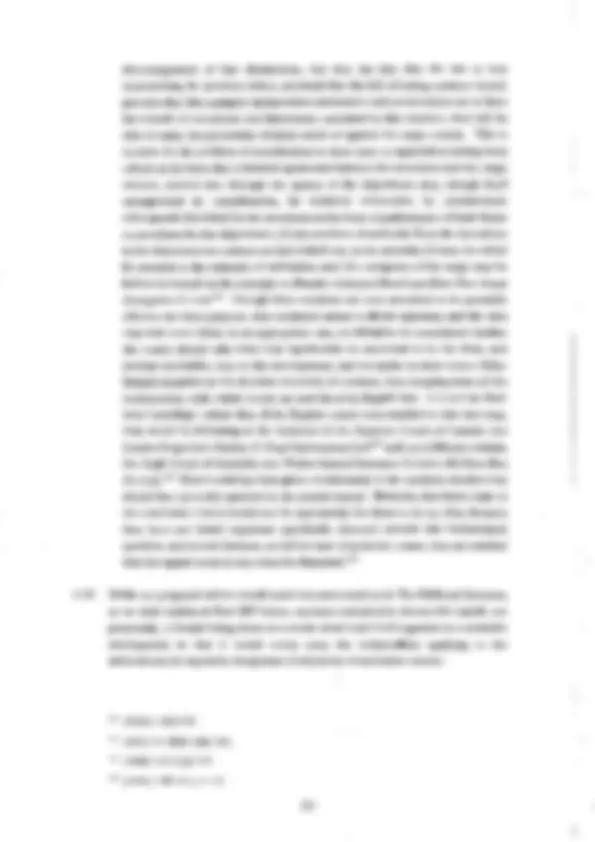

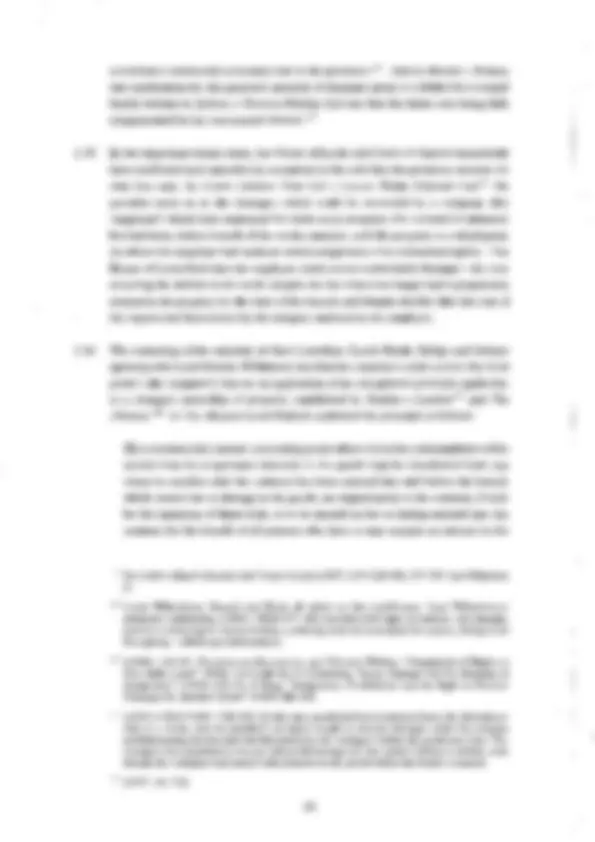
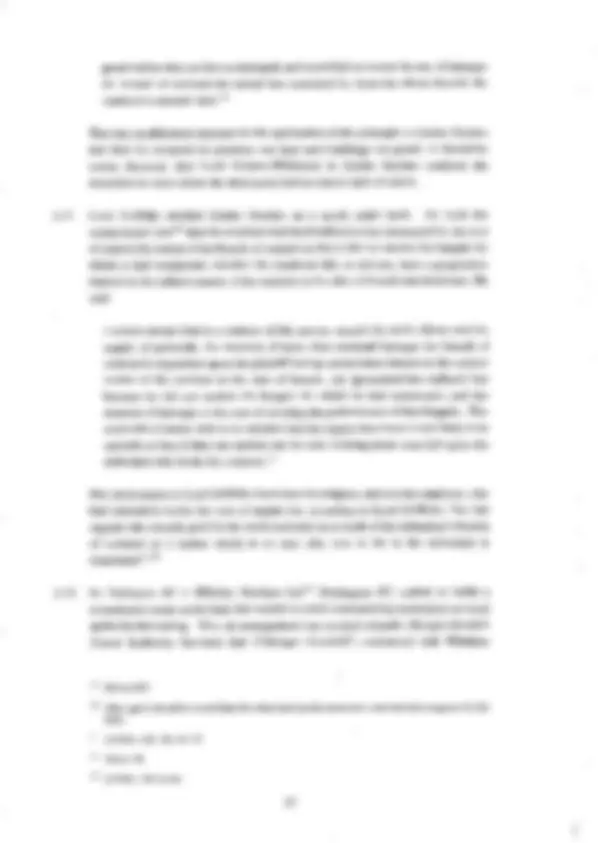
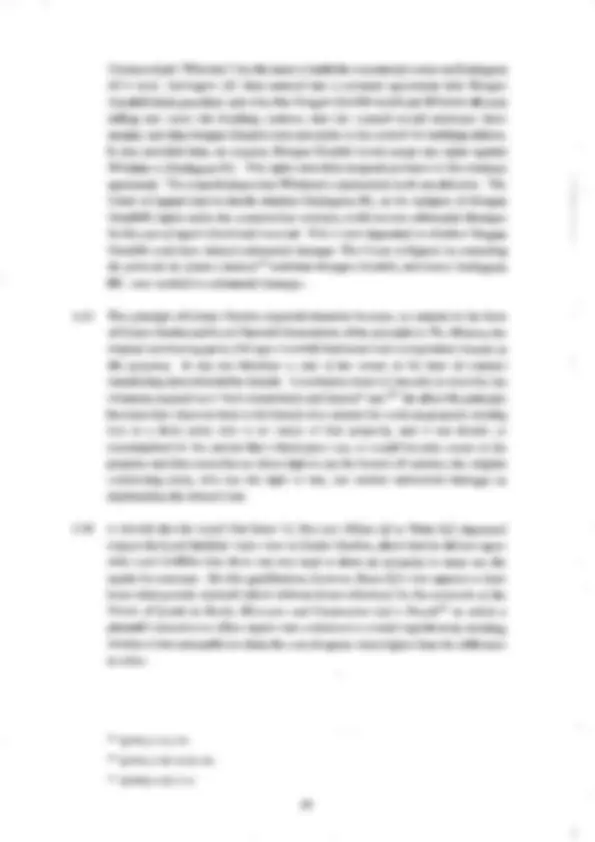
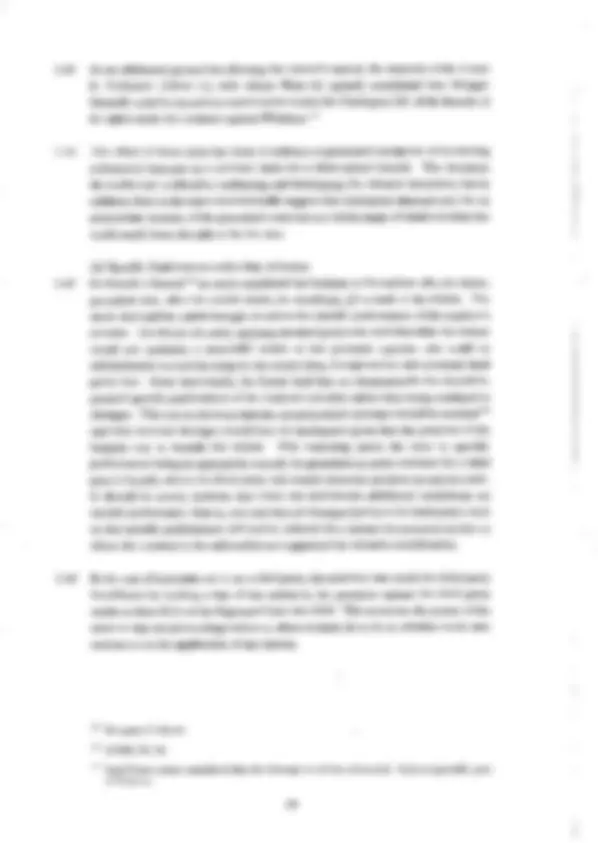
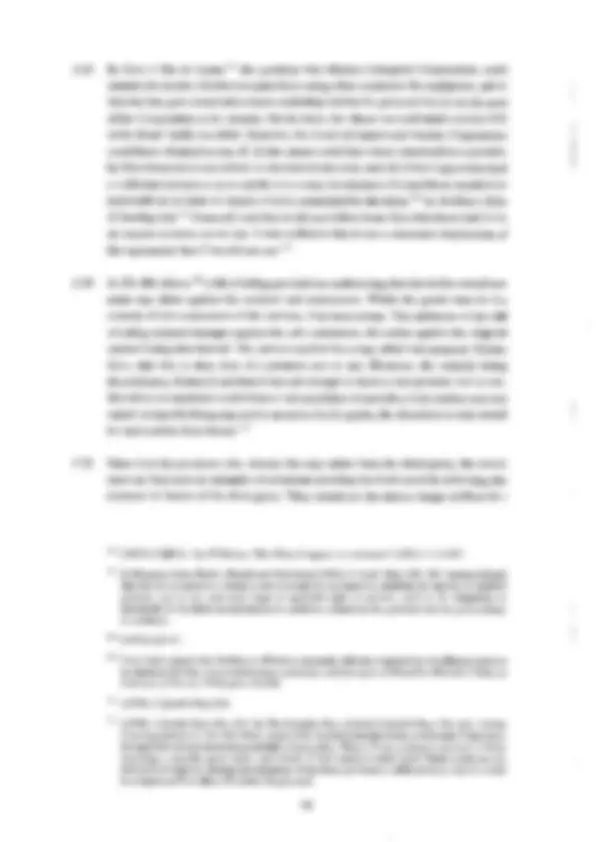
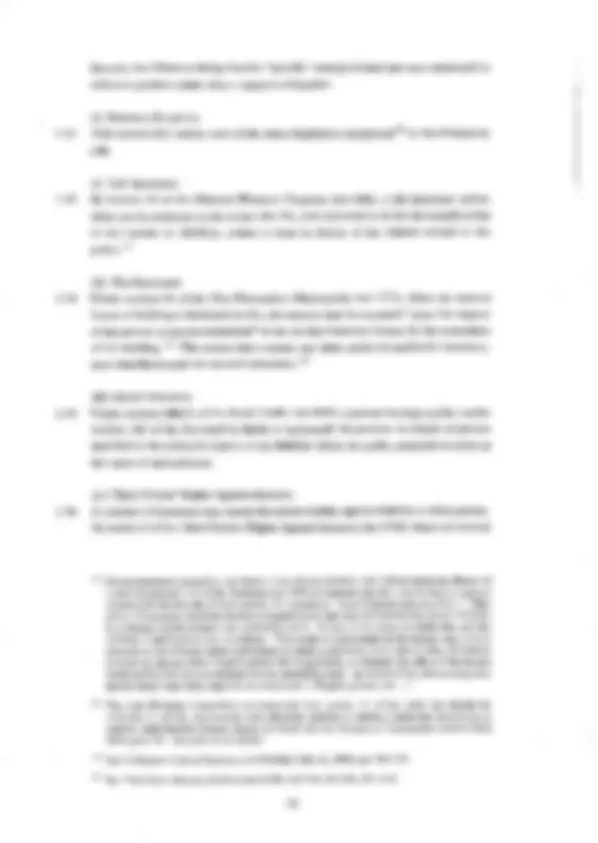
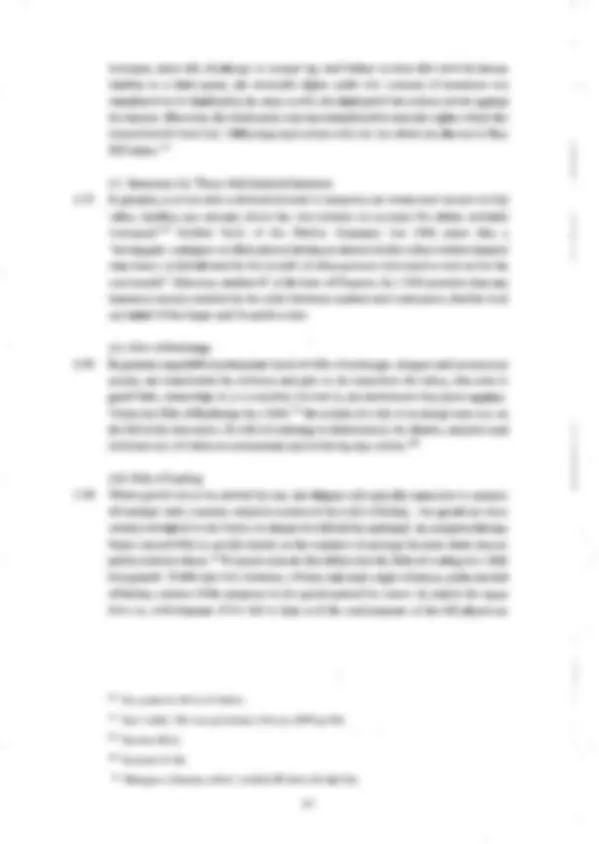
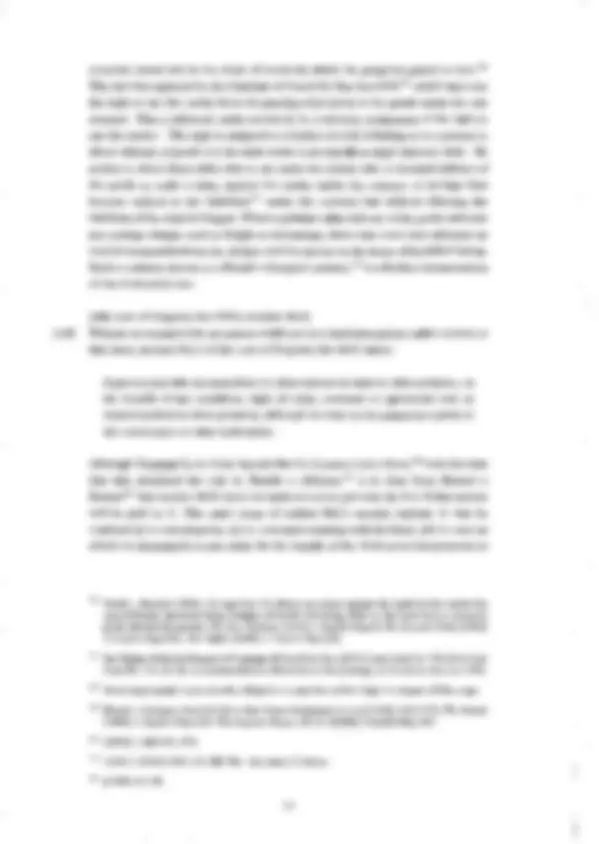
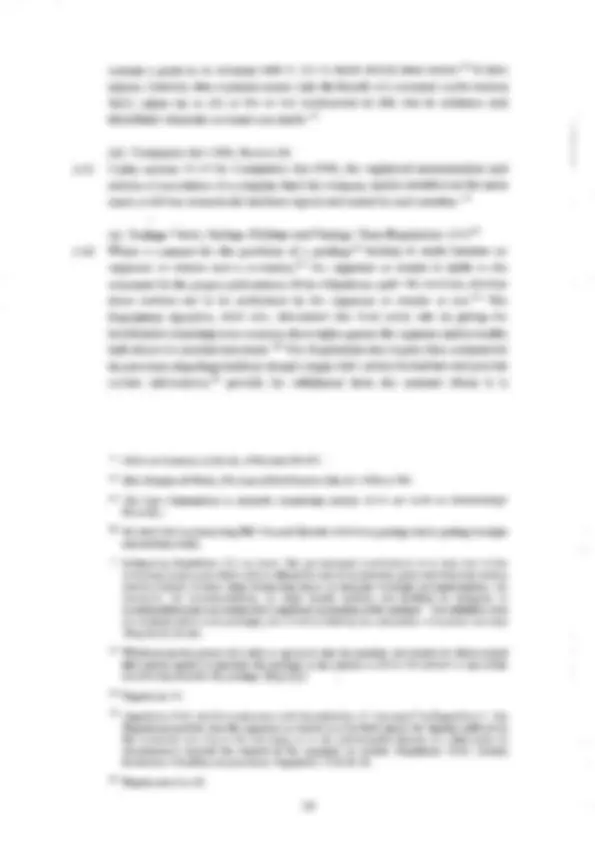

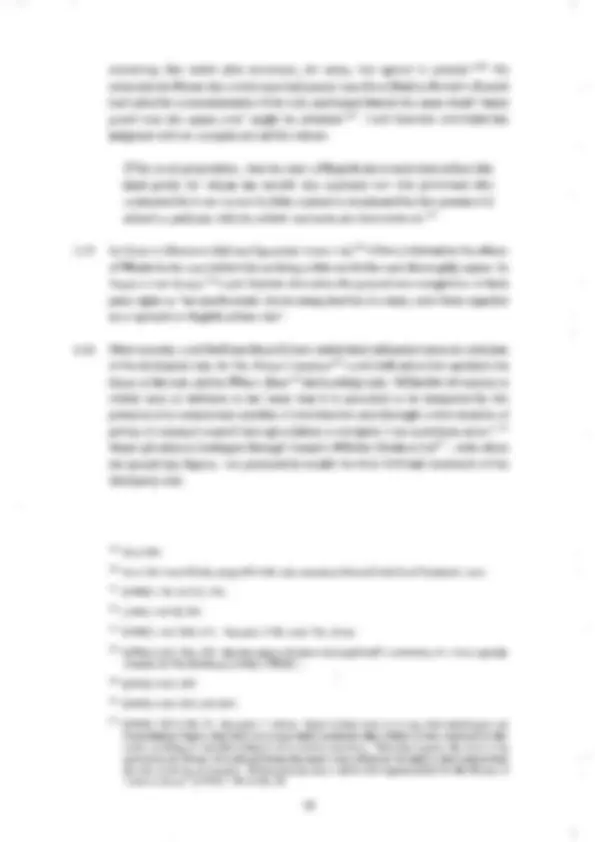
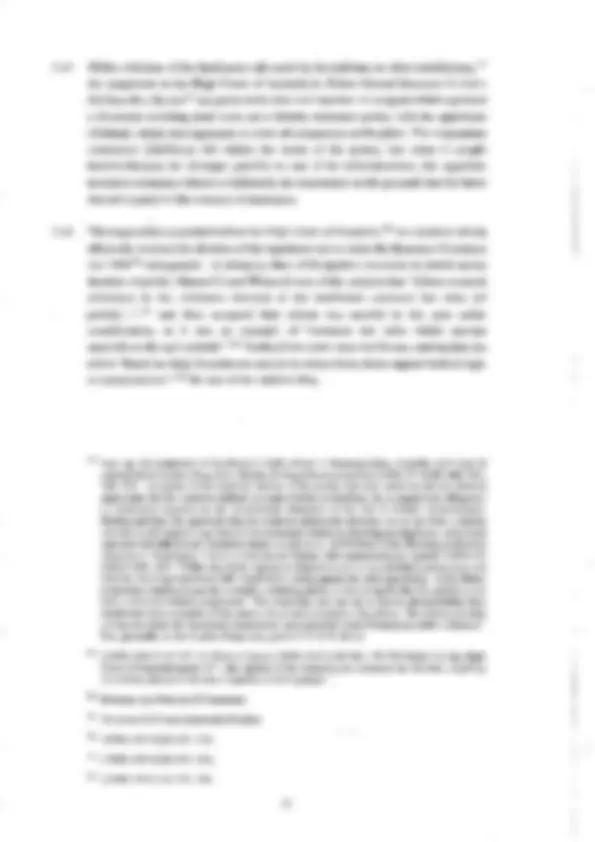
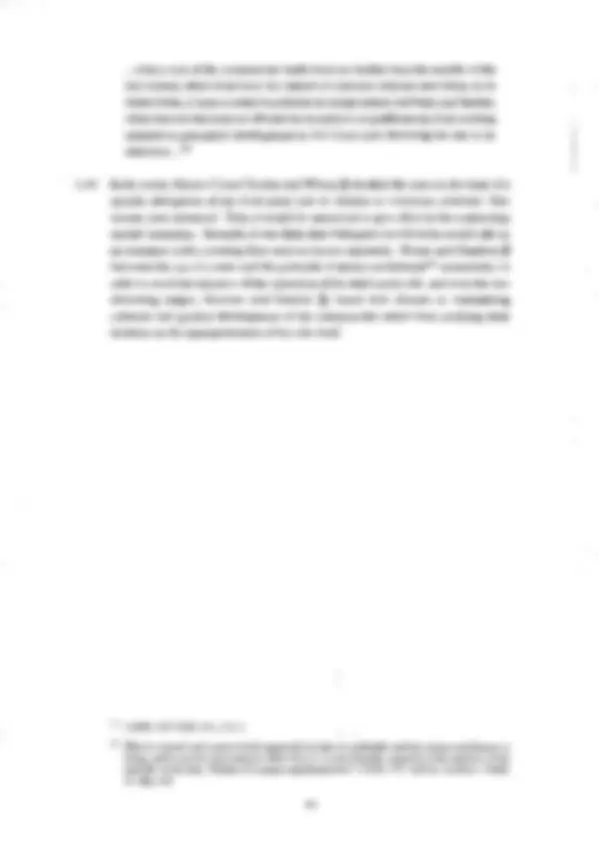
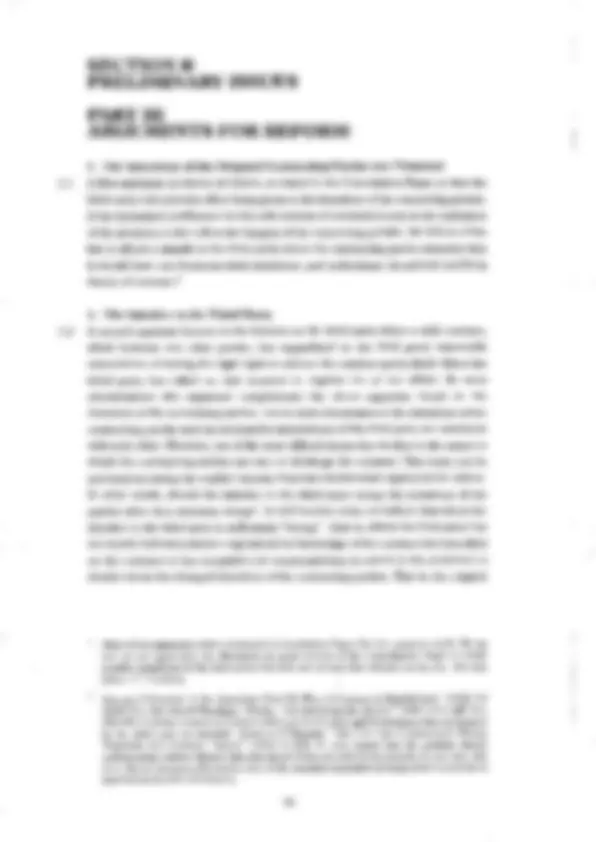
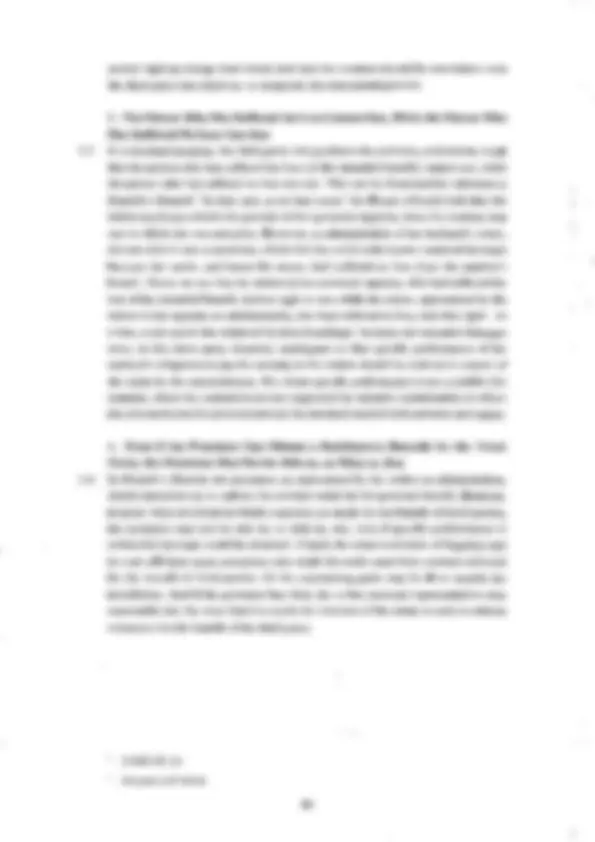
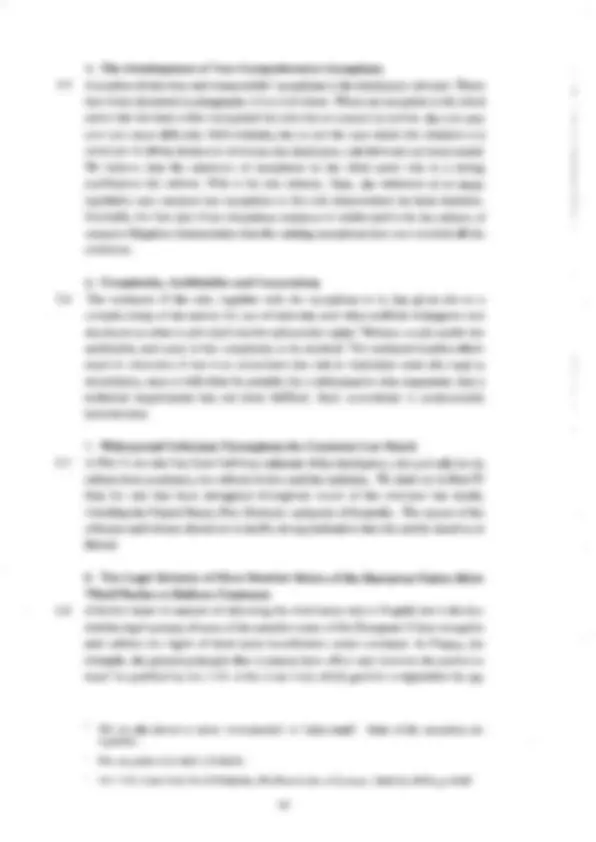
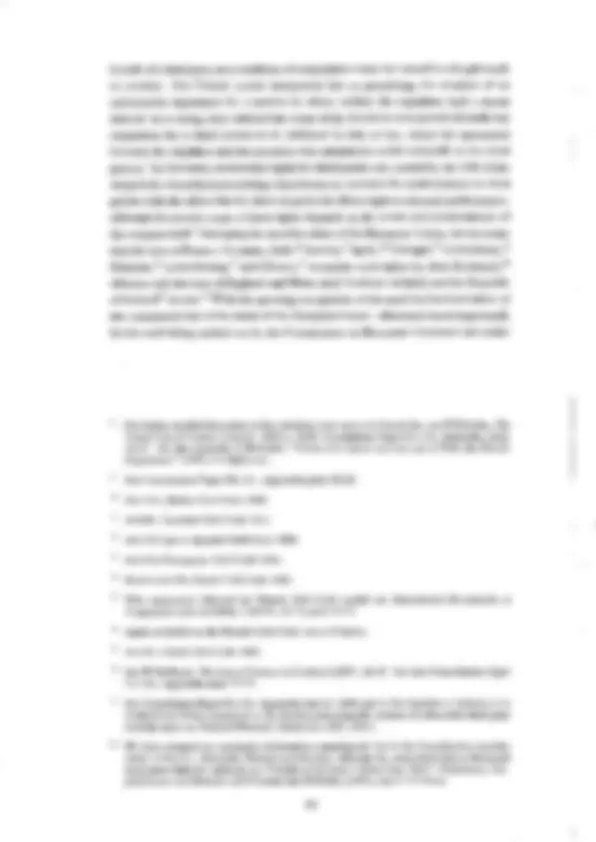
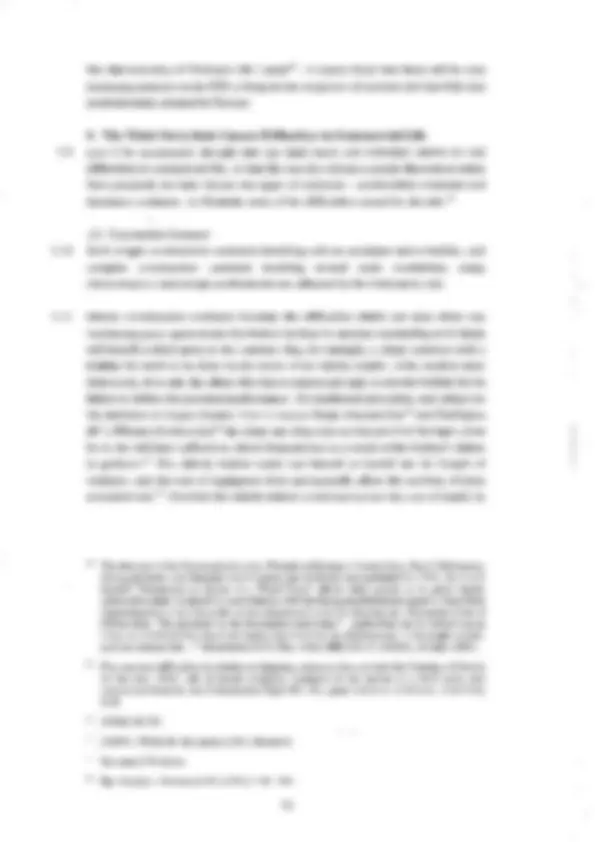
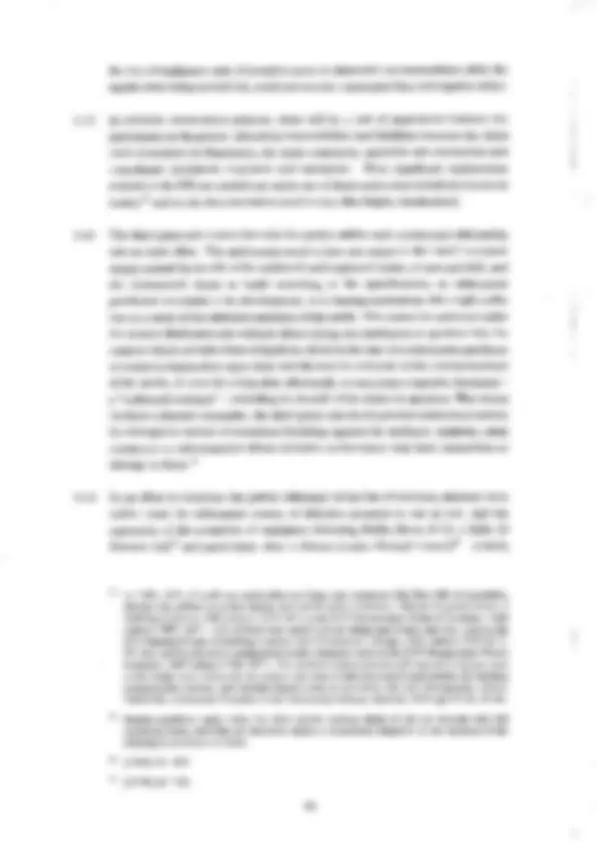
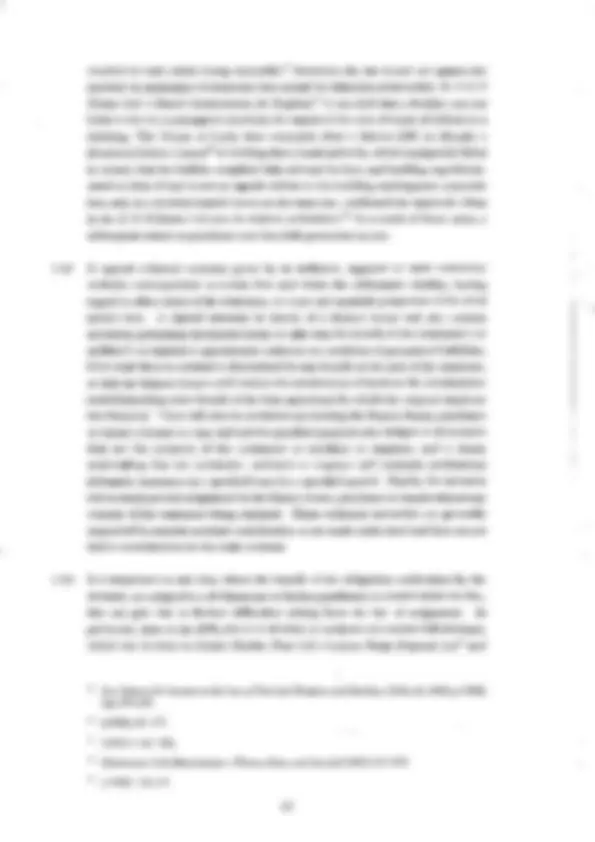
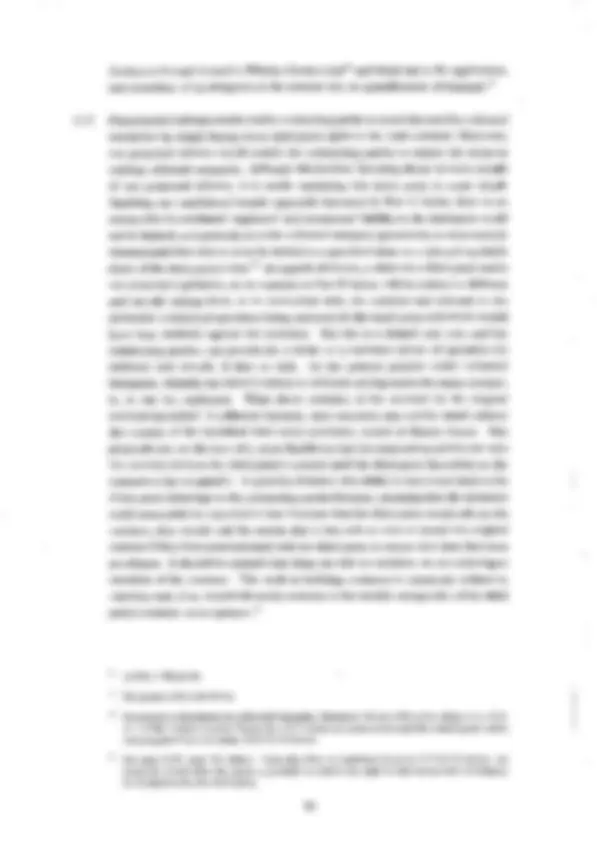
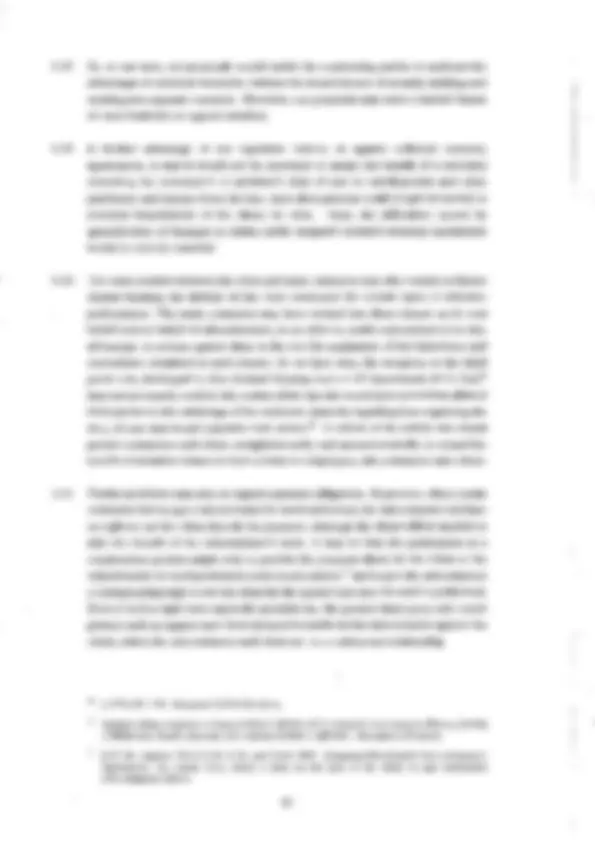
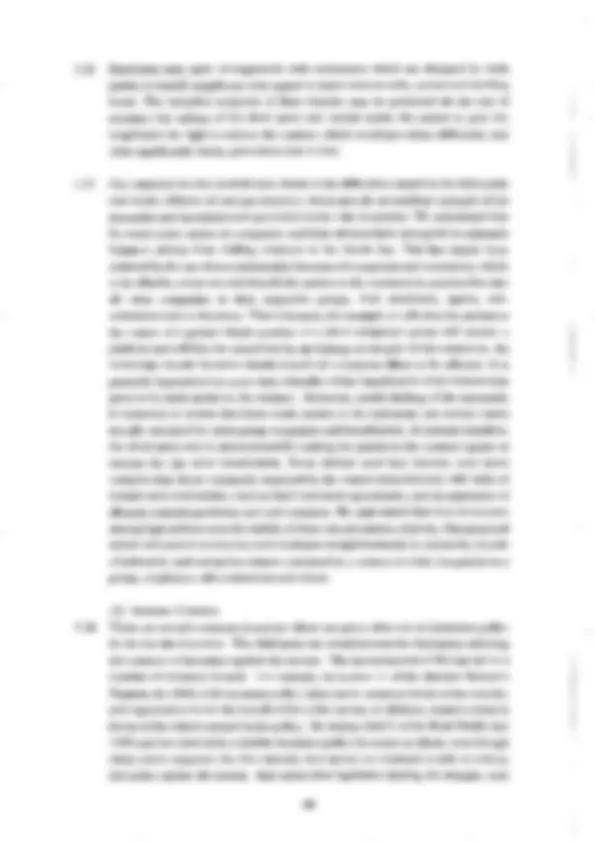
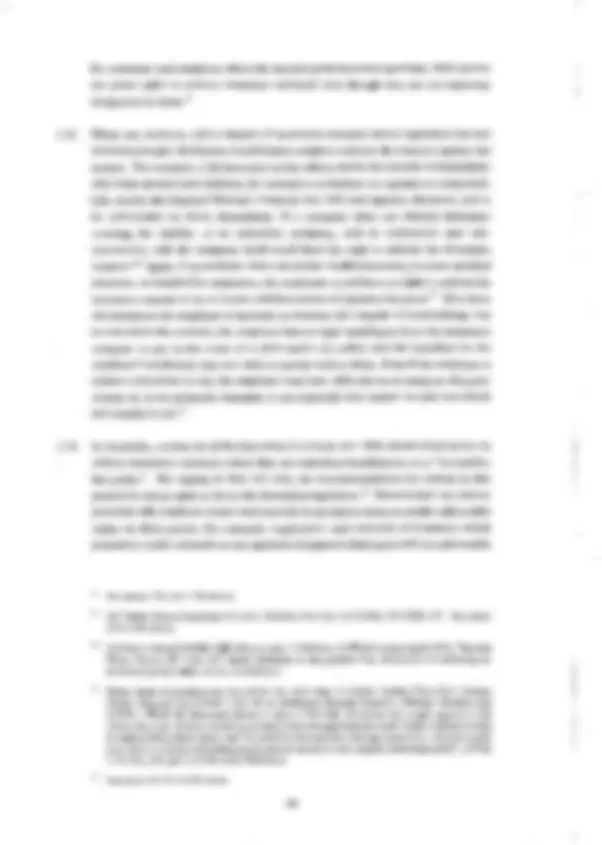
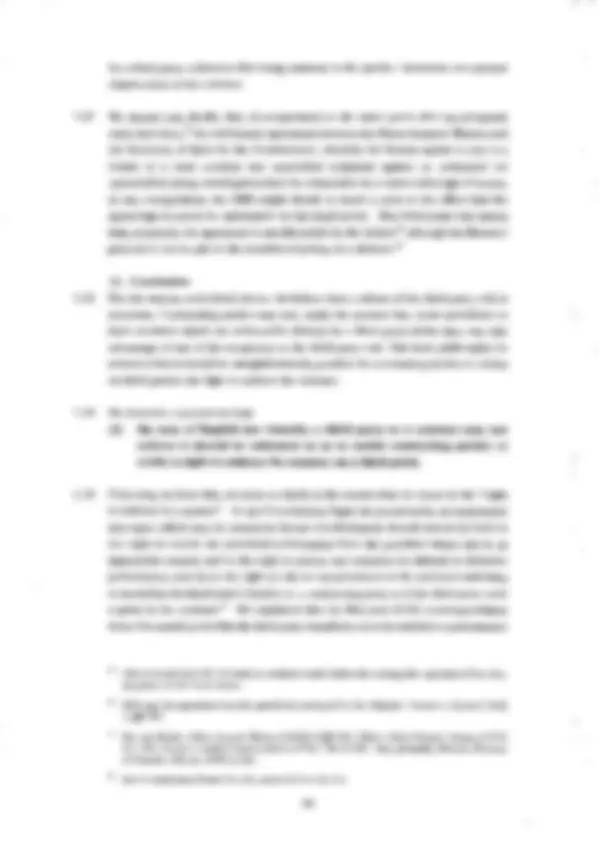
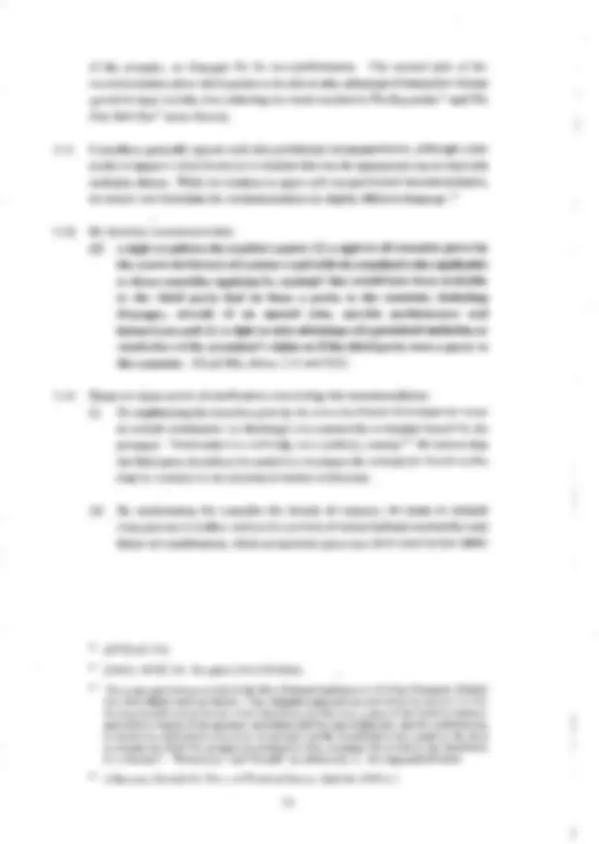
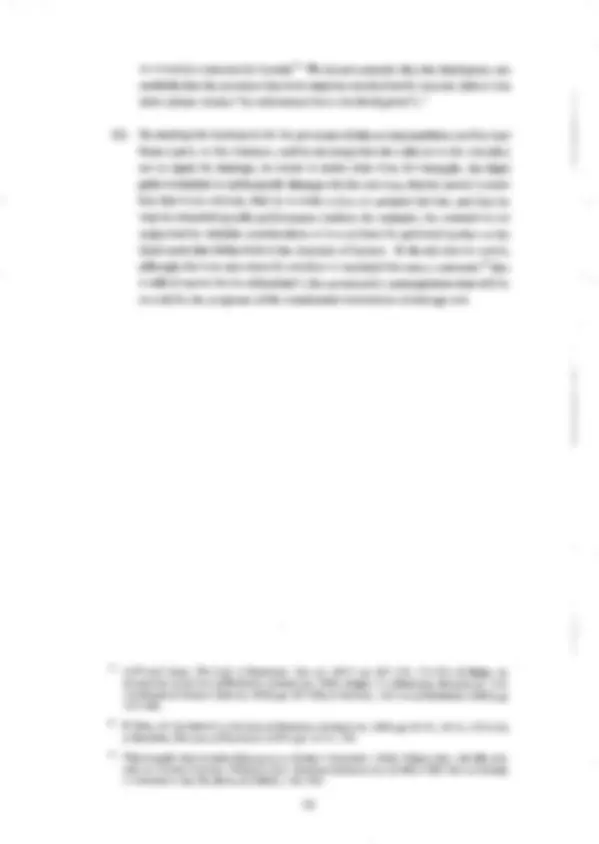
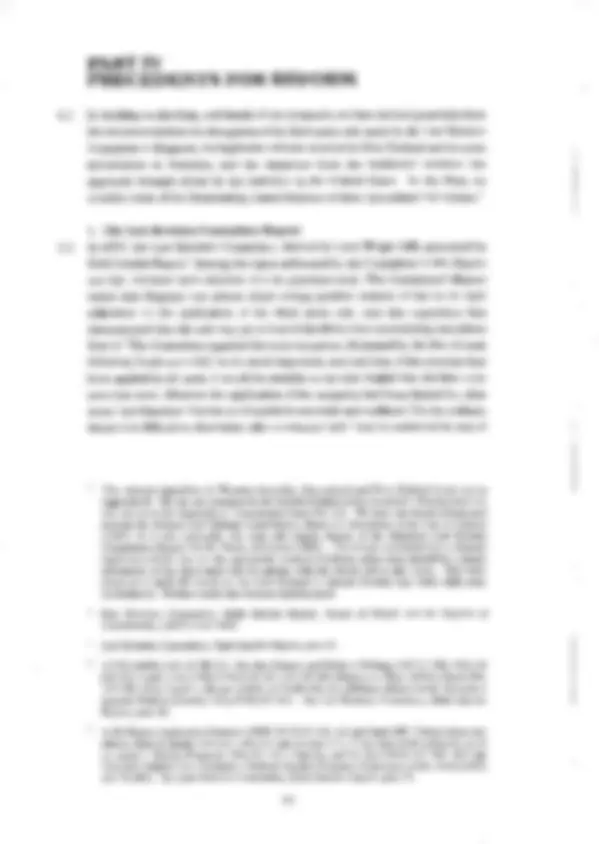
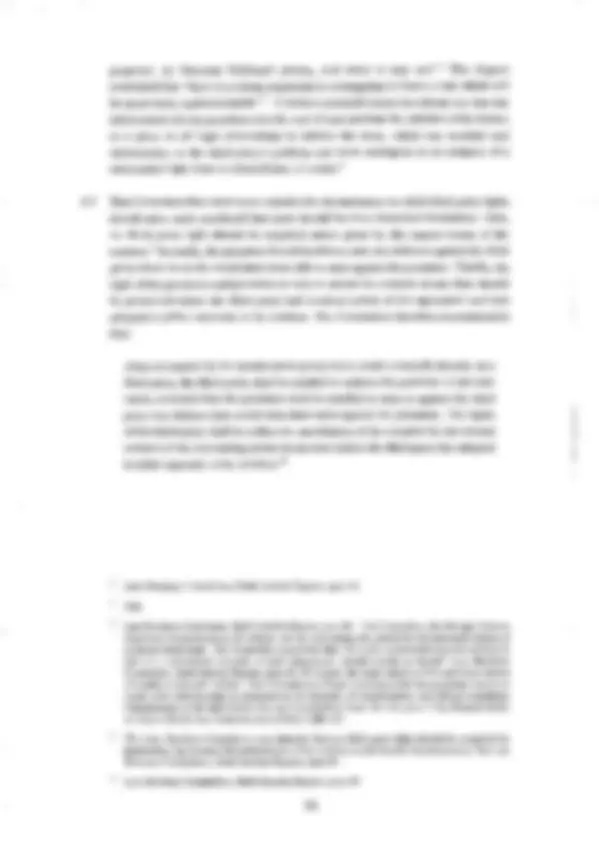
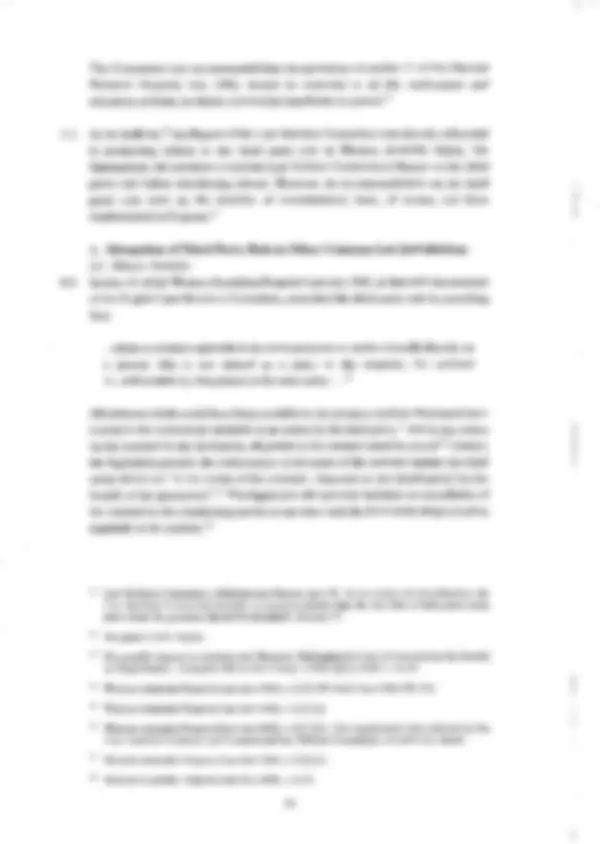
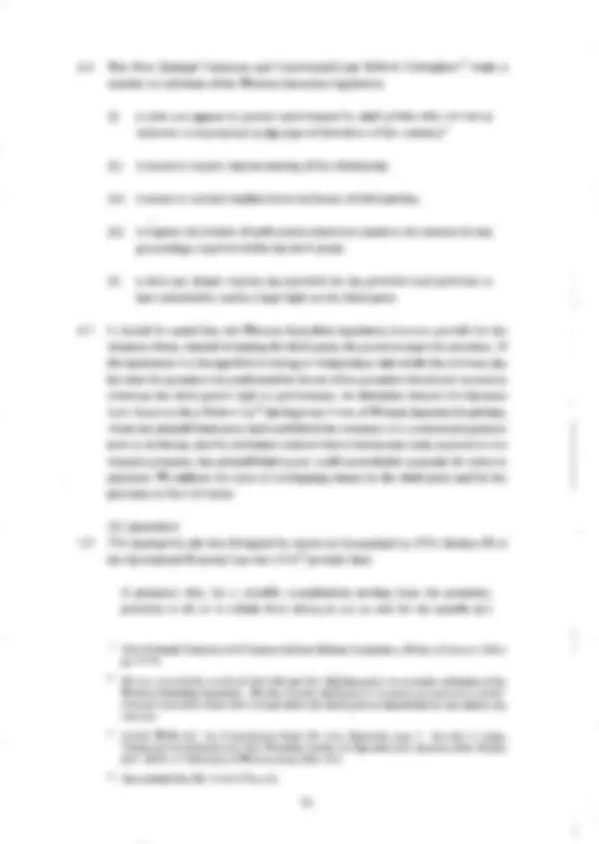
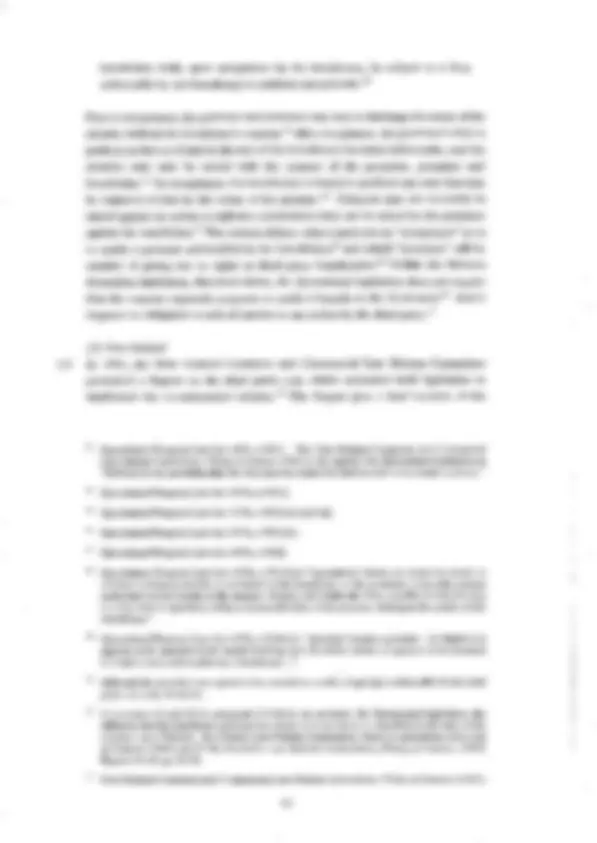
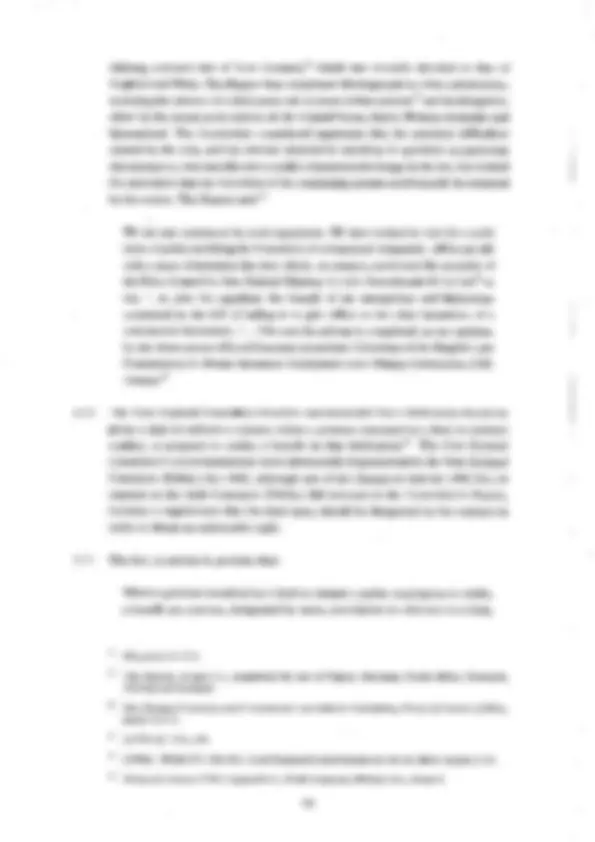
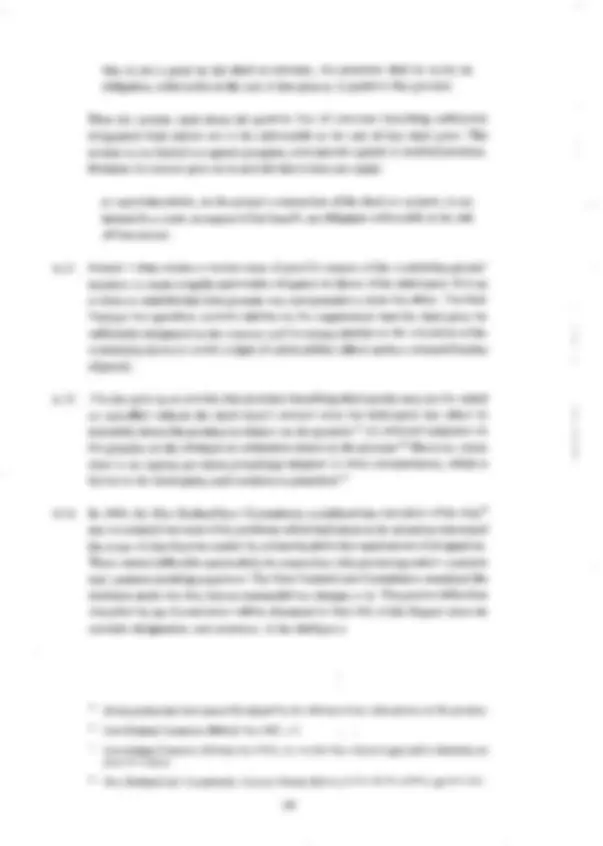
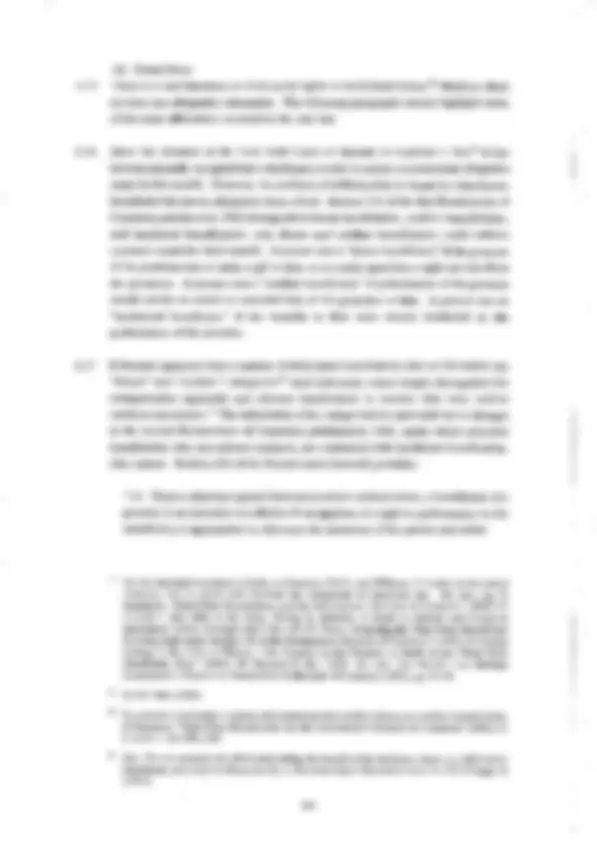
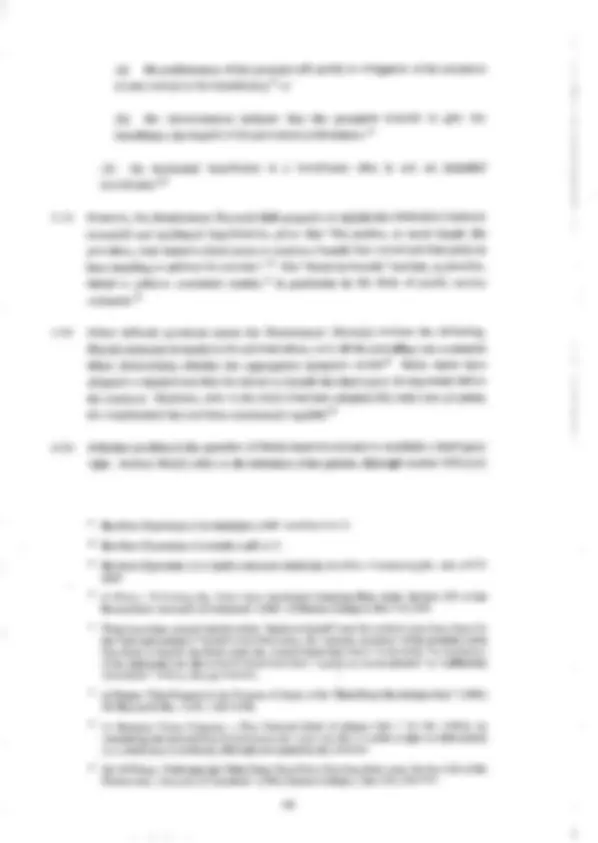

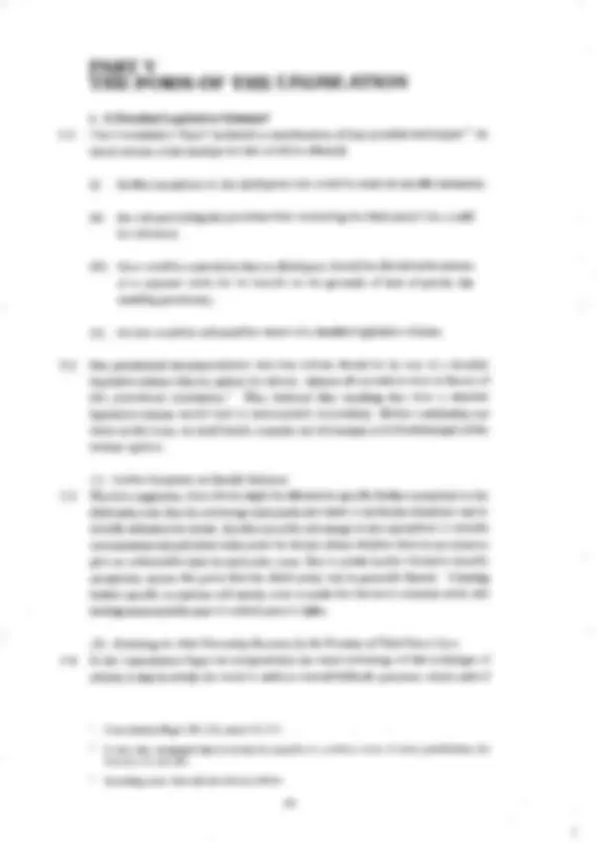
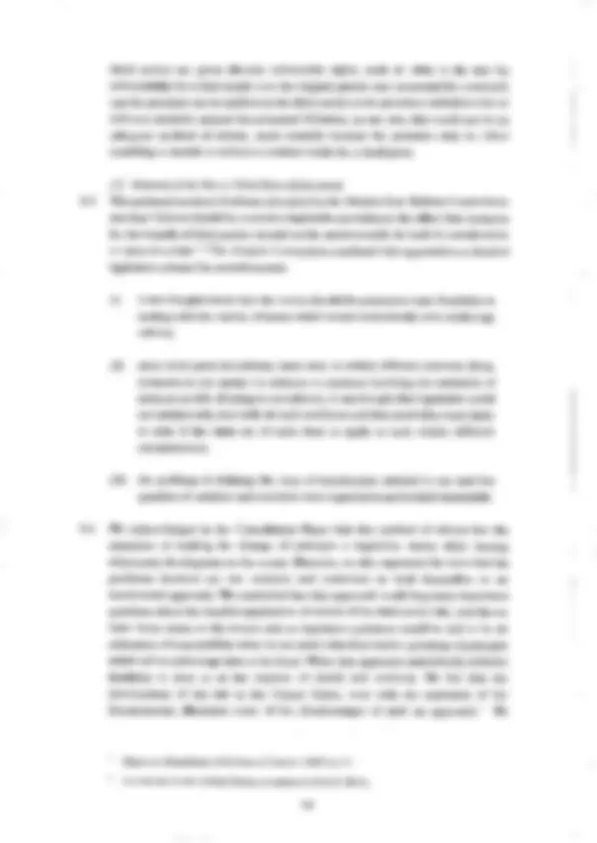
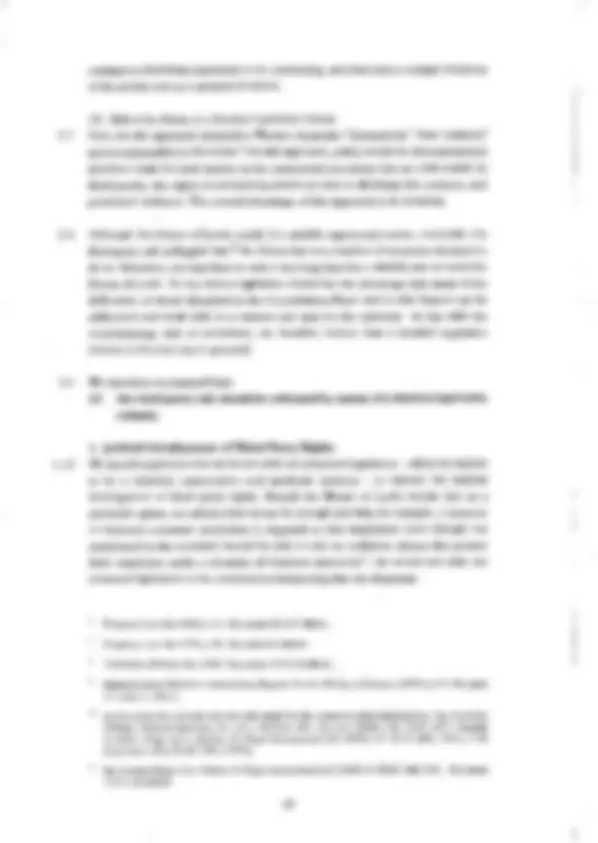
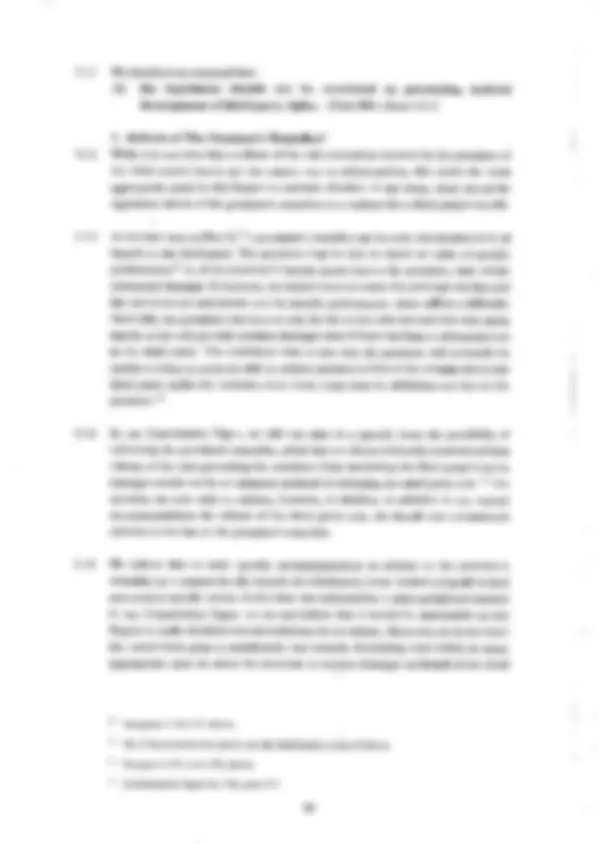
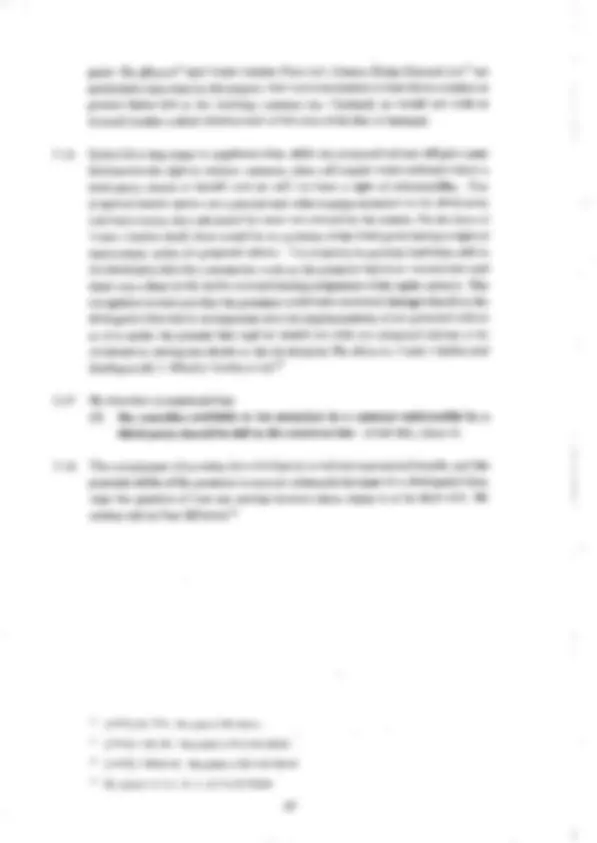
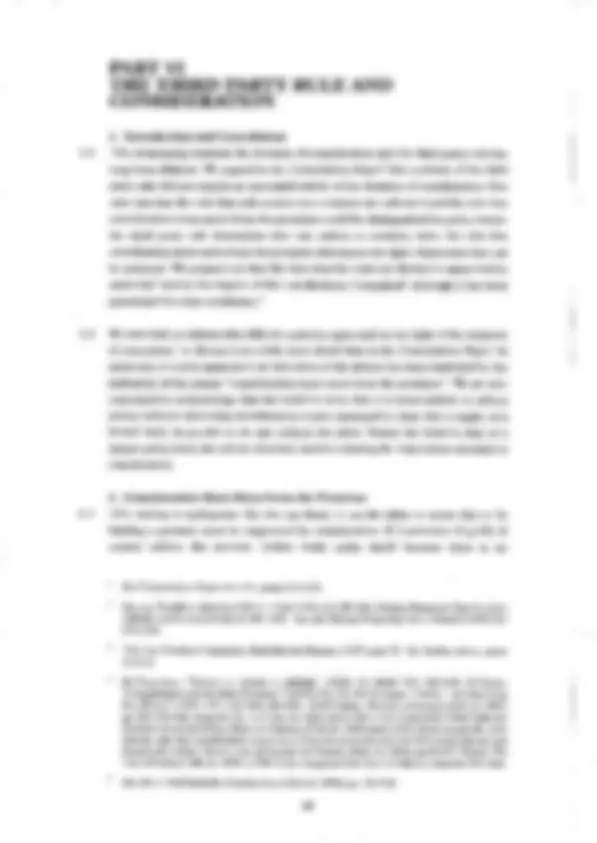
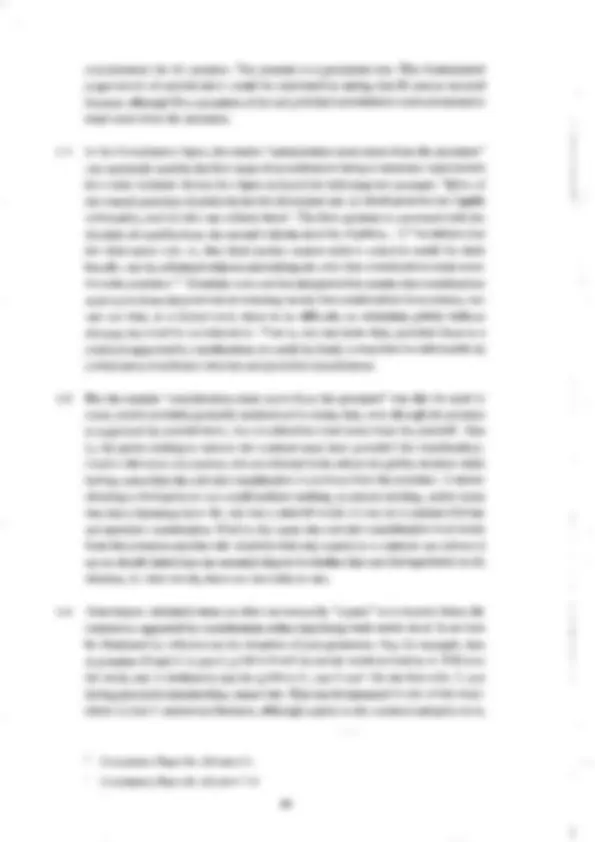
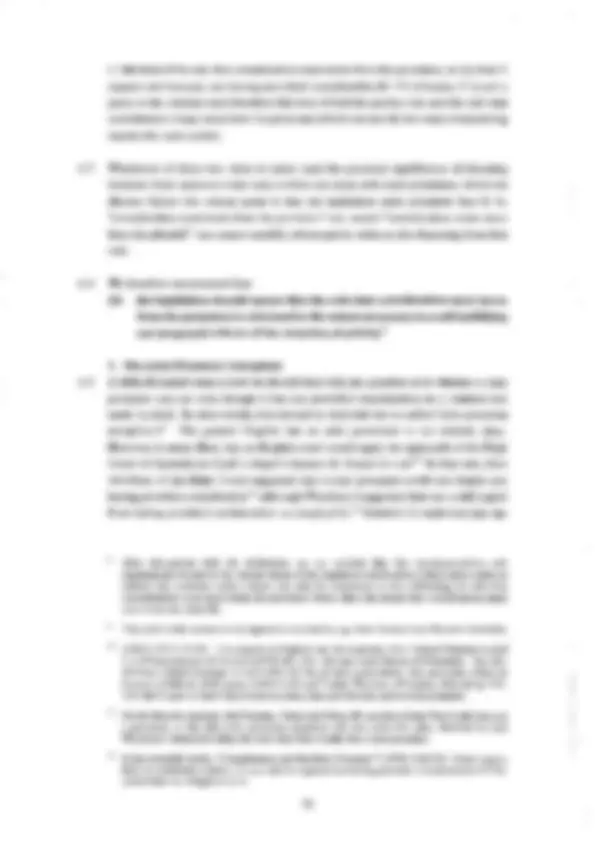
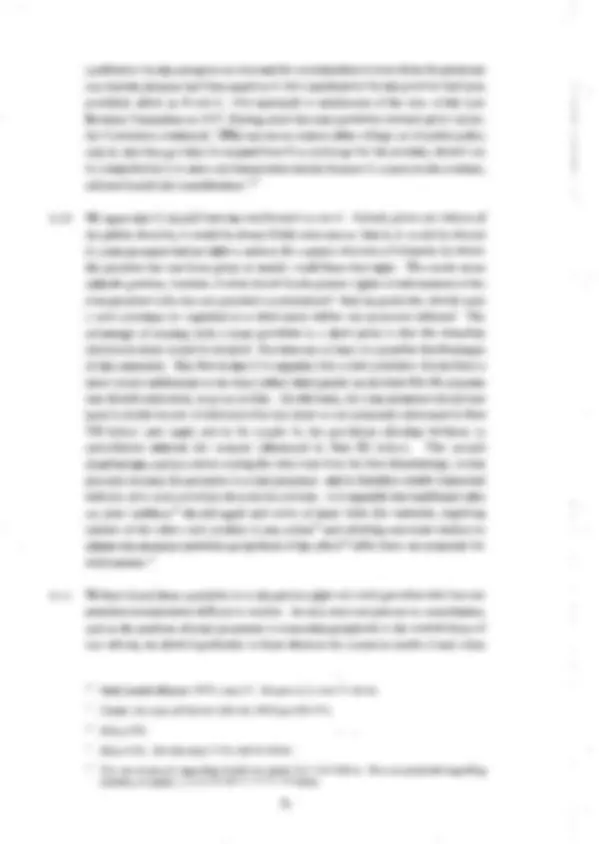
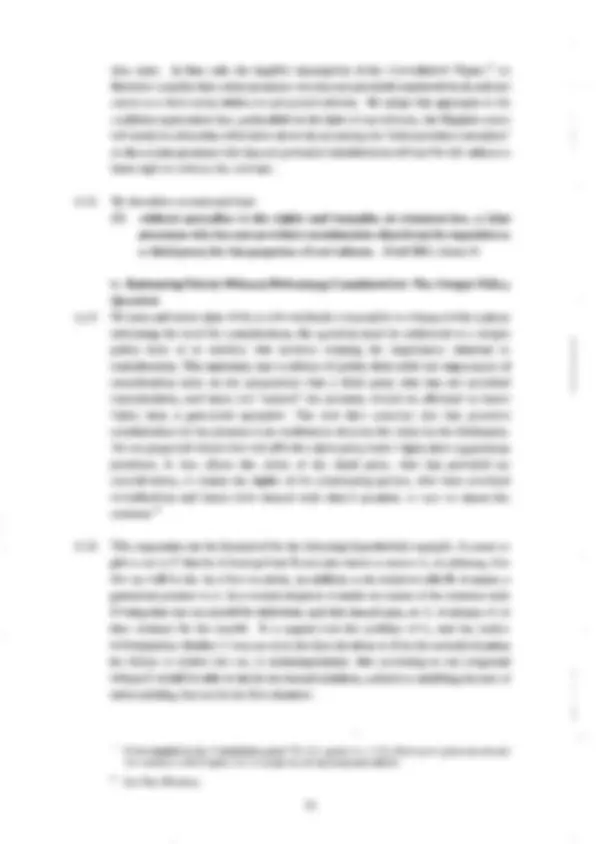
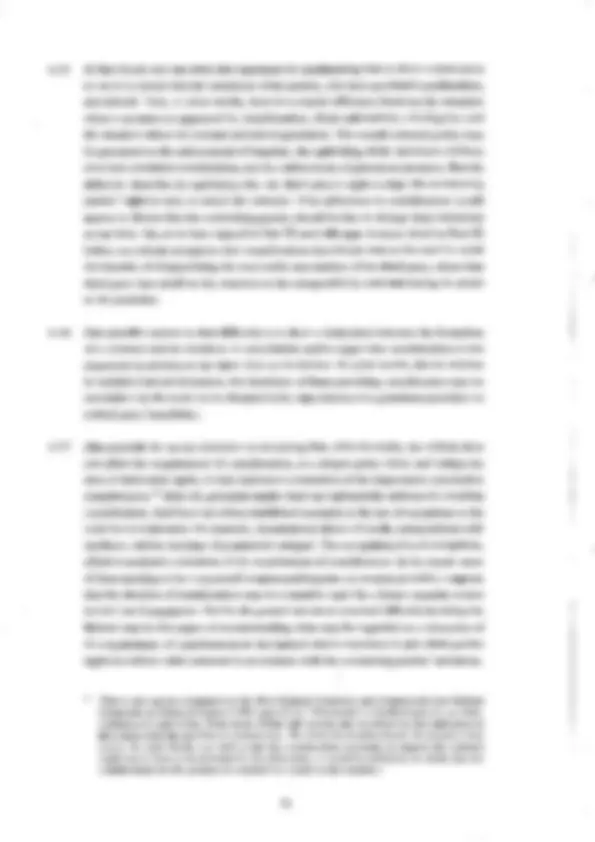
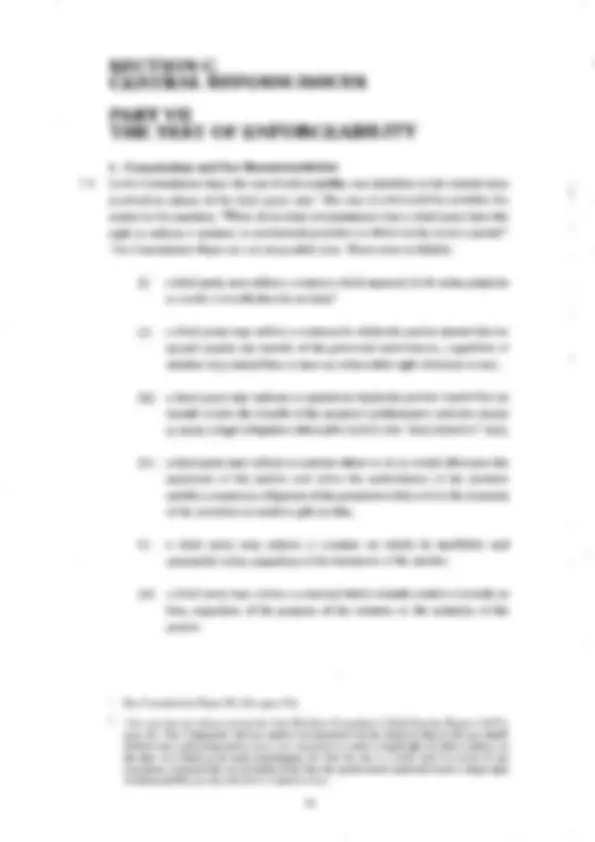
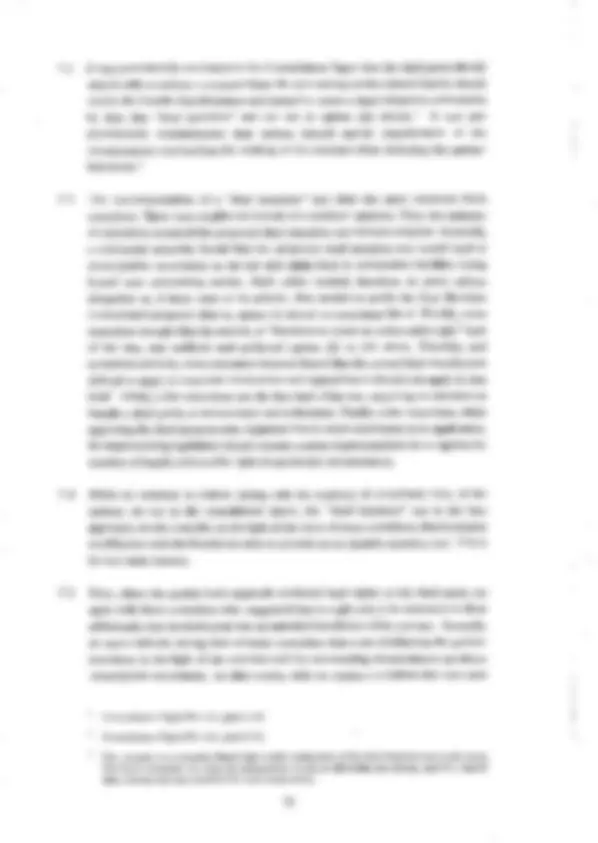
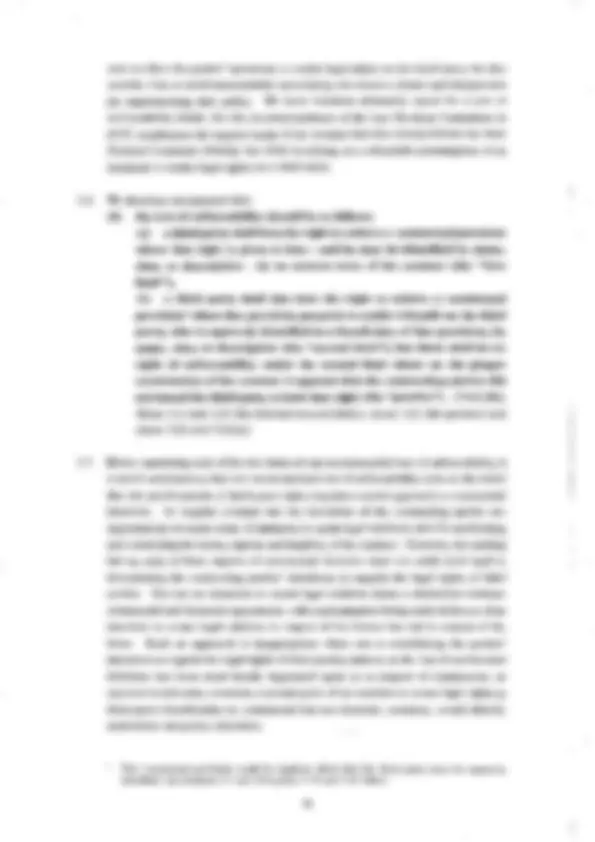
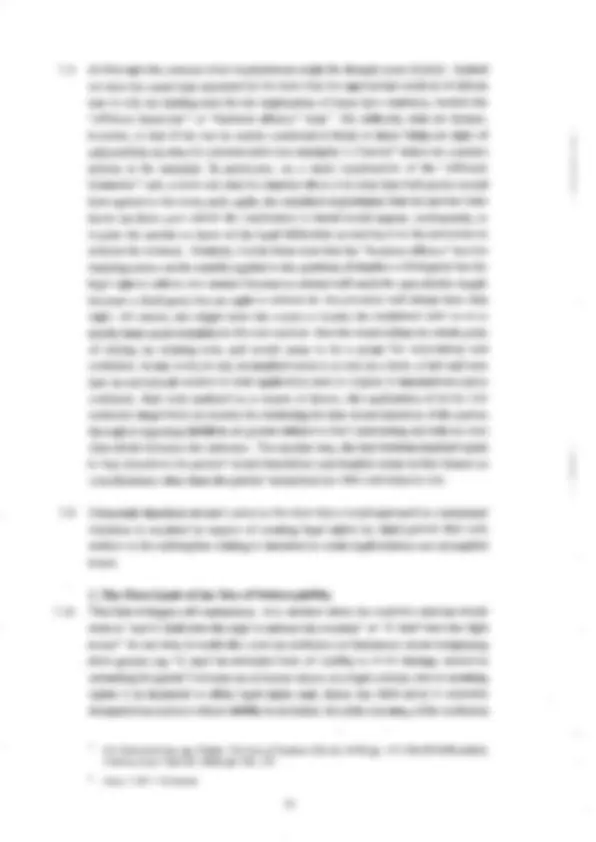
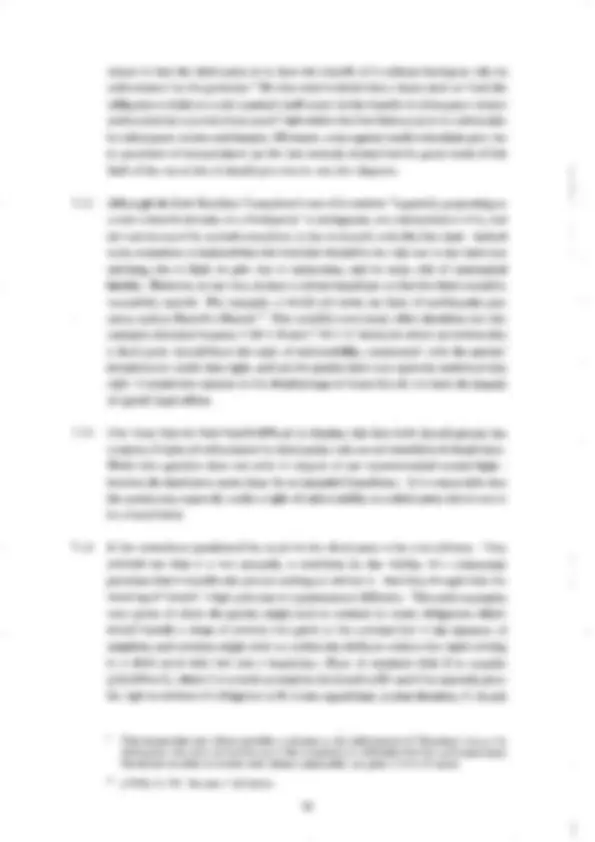
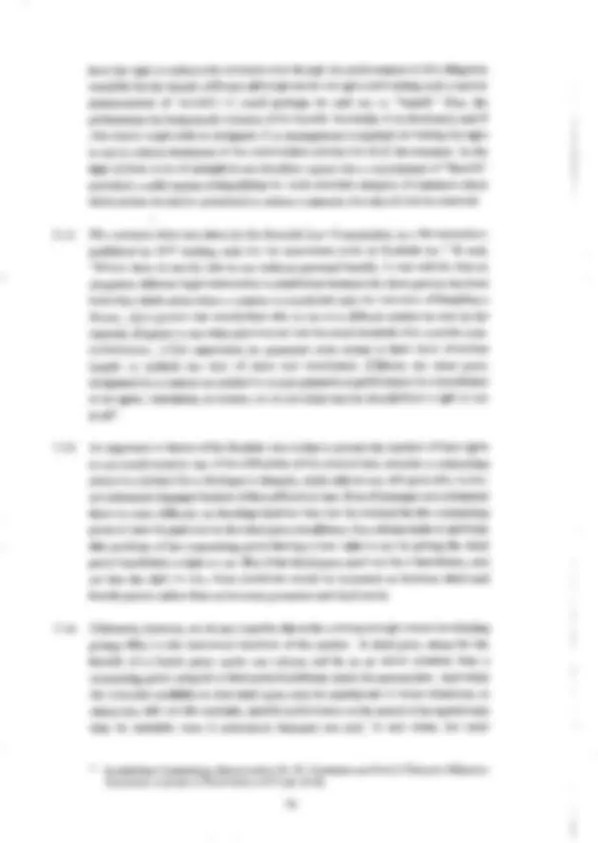
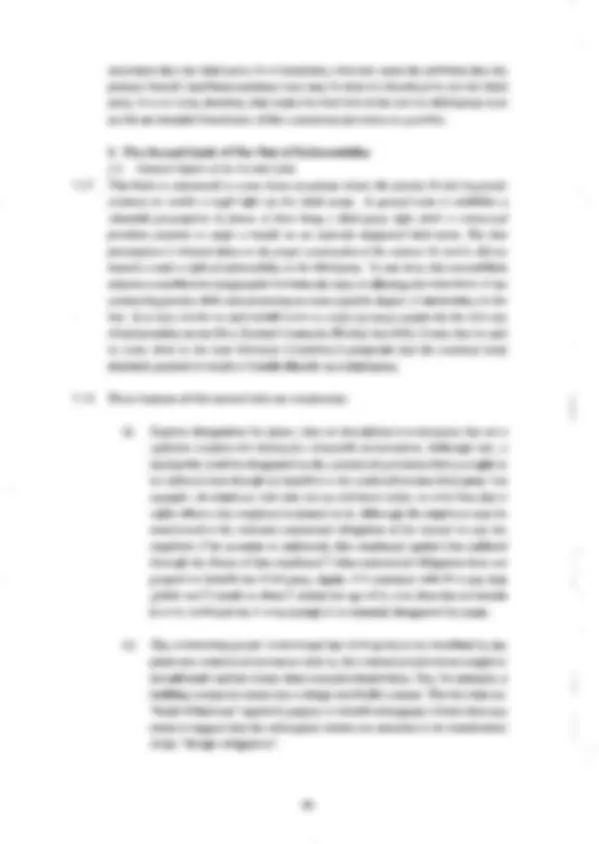
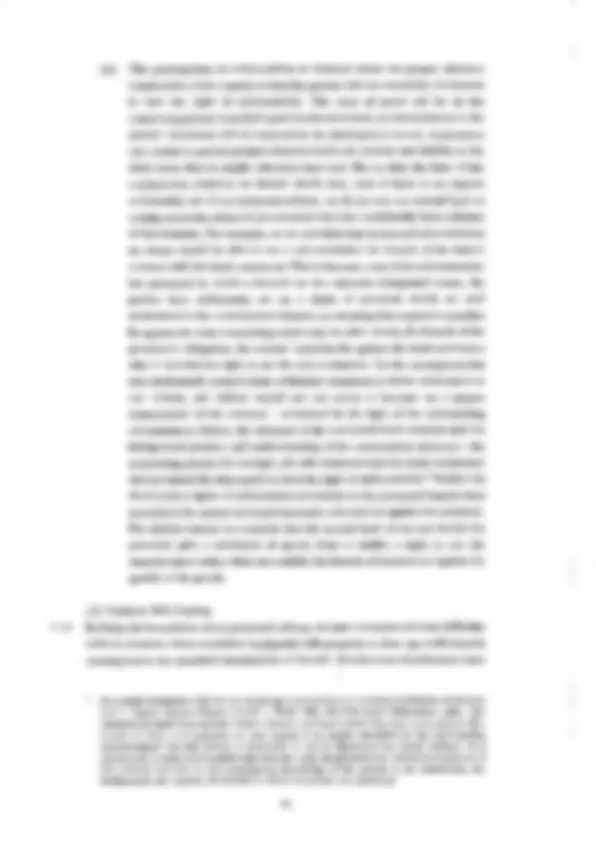
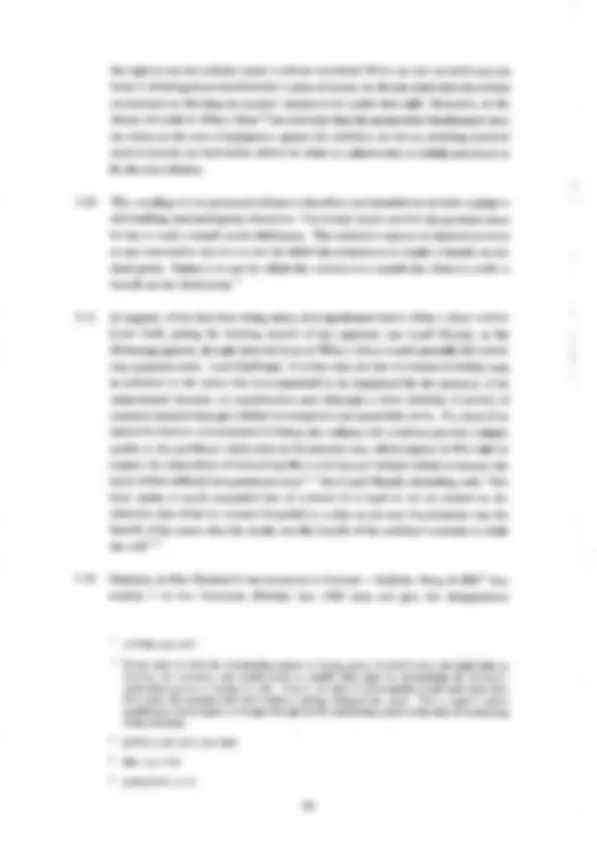
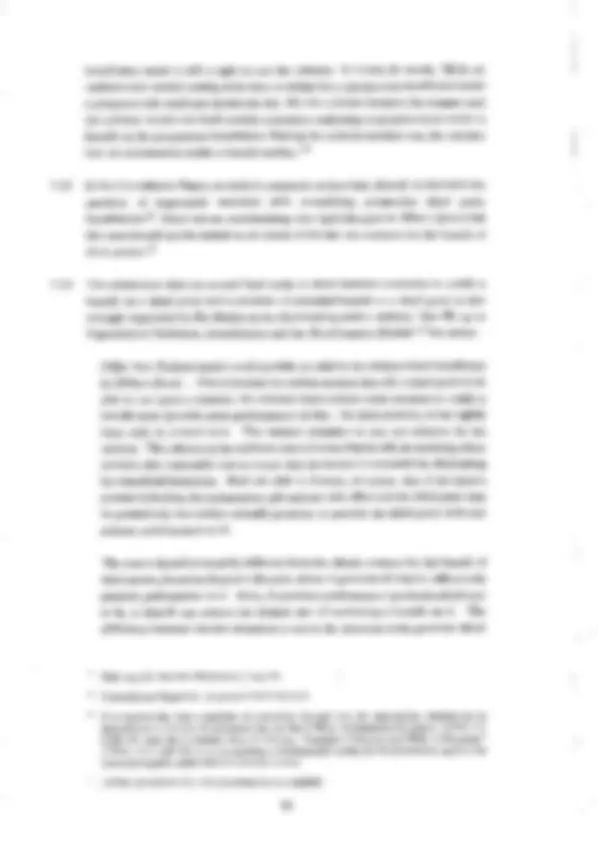
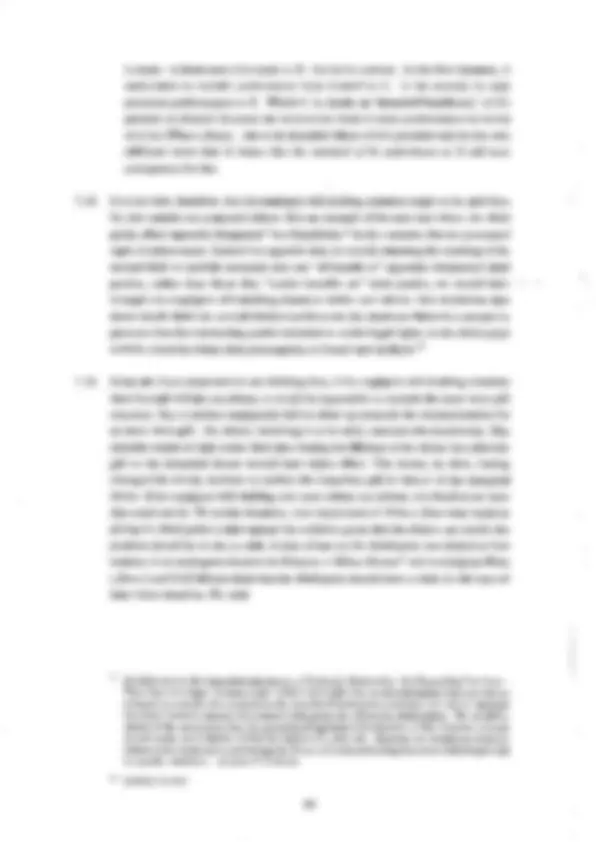
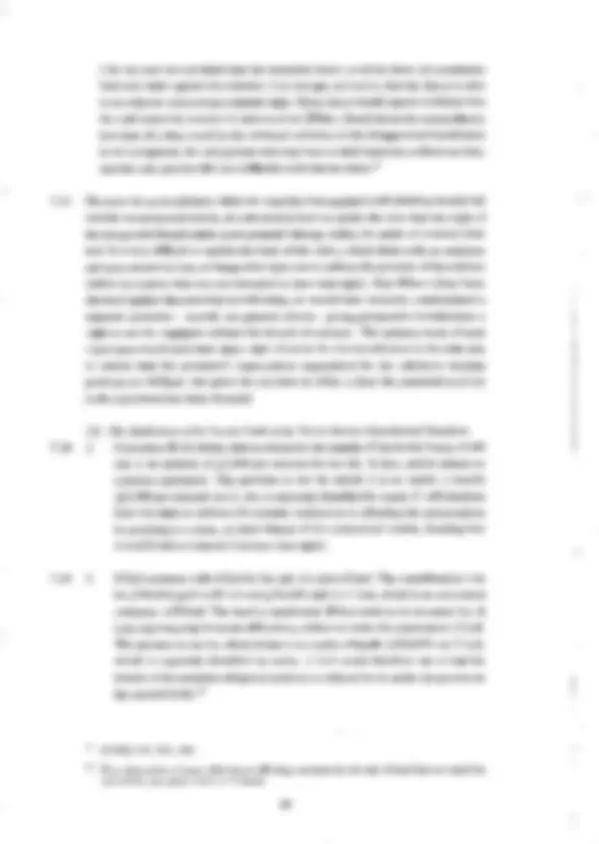
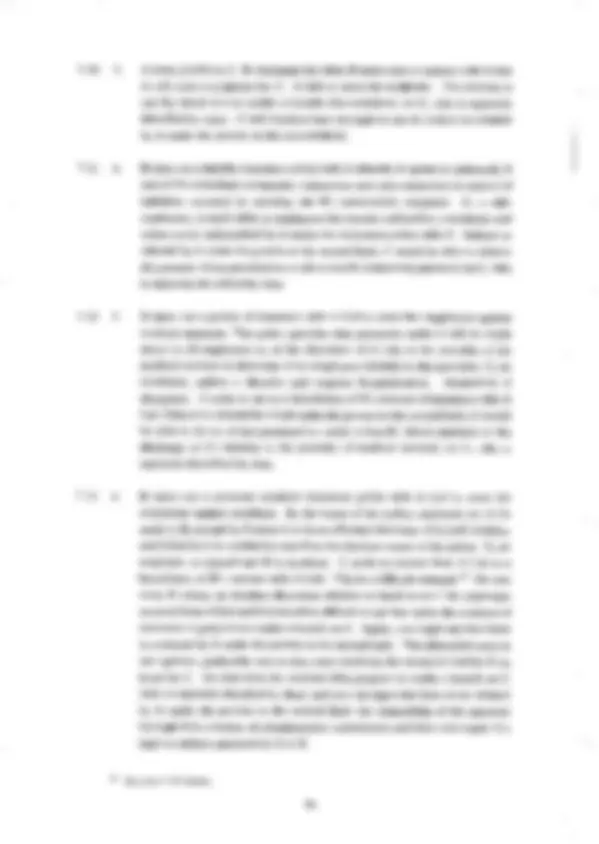
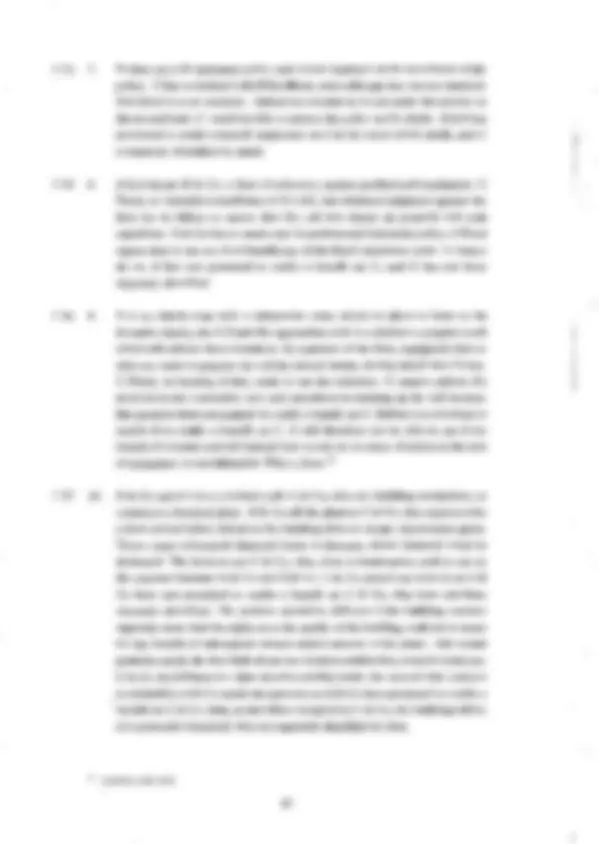
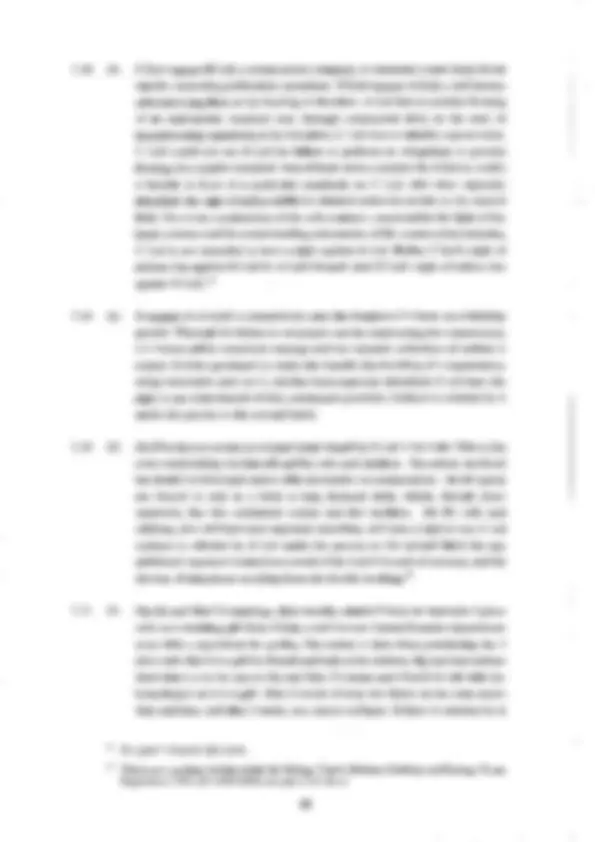
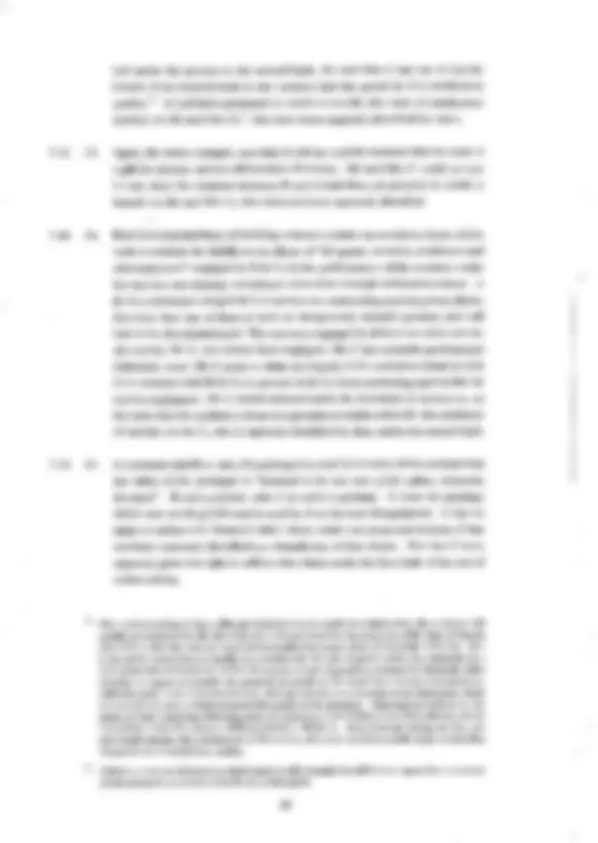
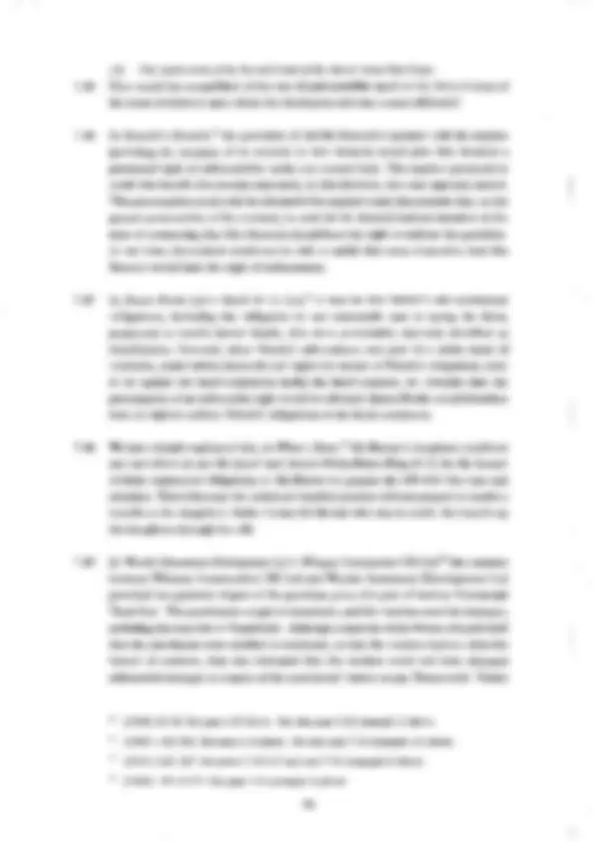
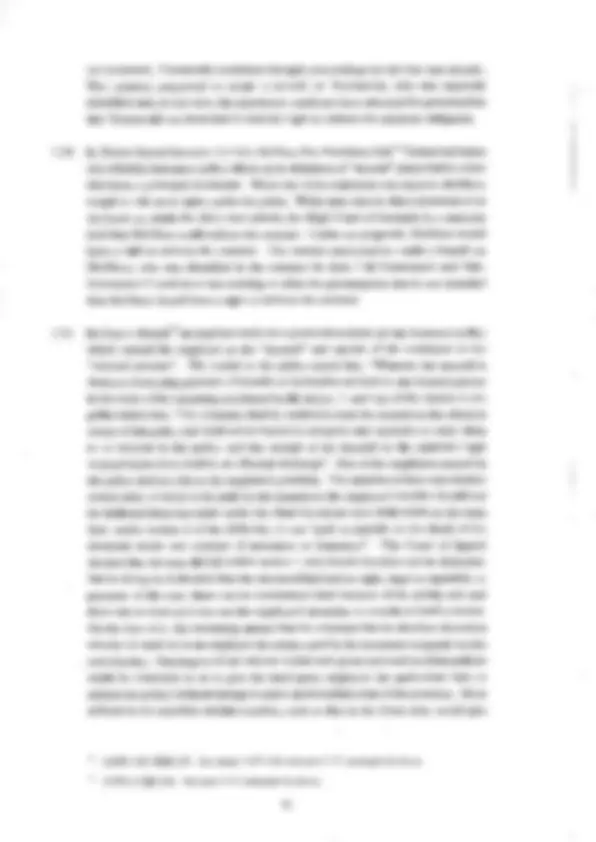
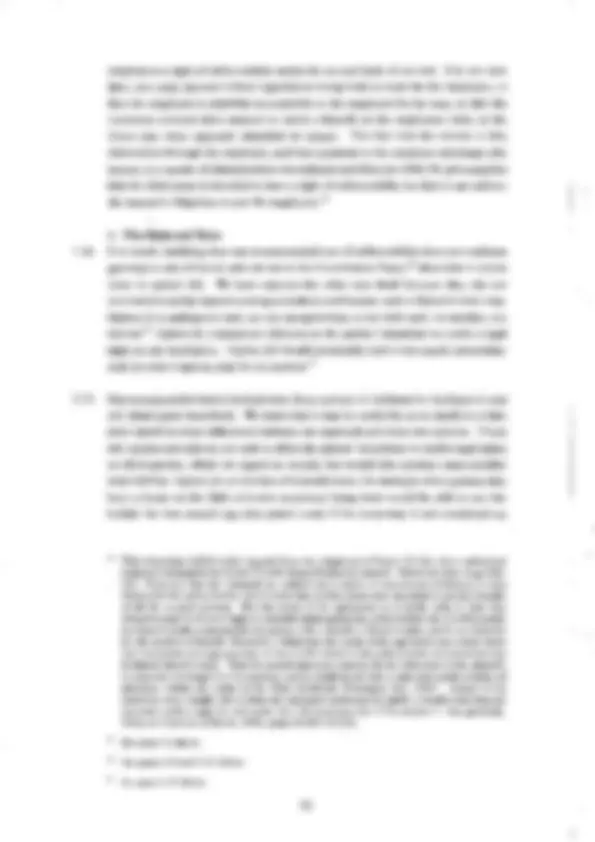


Study with the several resources on Docsity

Earn points by helping other students or get them with a premium plan


Prepare for your exams
Study with the several resources on Docsity

Earn points to download
Earn points by helping other students or get them with a premium plan
Community
Ask the community for help and clear up your study doubts
Discover the best universities in your country according to Docsity users
Free resources
Download our free guides on studying techniques, anxiety management strategies, and thesis advice from Docsity tutors
Appendix A: Appendix B: Draft Contracts (Rights of Third Parties) Bill with. Explanatory Notes. Legislation From Some Other Jurisdictions. Appendix C:.
Typology: Exams
1 / 203

This page cannot be seen from the preview
Don't miss anything!





























































































The Law Commission (LAWCOM N o 242)
PRIVITY OF CONTRACT:
CONTRACTS FOR THE BENEFIT
OF THIRD PARTIES
Item 1 of the Sixth Programme of Law Reform: The Law of Contract
..
LONDON: HMSO
Cm 3329
THE LAW COMMISSION
PRIVITY OF CONTRACT: CONTRACTS FOR THE BENEFIT OF THIRD PARTIES
CONTENTS
Paragraph Page
SECTION A: BACKGROUND
PART I: INTRODUCTION
PART 11:
THE PRESENT LAW AND CALLS FOR REFORM
(2) Development of the Third Party Rule (3) Existing Exceptions to, or Circumventions ofJ the Third Party Rule Trust of the Promise Covenants Concerning Land Tort of Negligence Agency Assignment Collateral Contracts Techniques Used to Enable Third Parties to Take the Benefit of Exclusion Clauses Promisee’s Remedies Assisting the Third Party (i) Damages (ii) Specific Performance and a Stay of Action Statutory Exceptions (i) Life Insurance (ii) Fire Insurance (iii) Motor Insurance (iv) Third Parties’ Rights Against Insurers
(vi) Bills of Exchange (vii) Bills of Lading (viii)Law of Property Act 1925, Section 56(1) (ix) Companies Act 1985, Section 14 (x) Package Travel, Package Holidays and Package Tours Regulations 1992
Calls for Reform
1 6 6 6 9 9
10 12 14 15 16
16 25 25 29 31 31 31 31 31 32 32 32 33 34
34 35
I
Paragraph Page
SECTION B: PRELIMINARY ISSUES
PART 111: ARGUMENTS FOR REFORM
The Intentions of the Original Contracting Parties are Thwarted The Injustice to the Third Party The Person Who Has Suffered the Loss Cannot Sue, While the Person Who Has Suffered No Loss Can Sue Even if the Promisee Can Obtain a Satisfactory Remedy for the Third Party, the Promisee May Not be Able to, or Wish to, Sue The Development of Non-Comprehensive Exceptions Complexity, Artificiality and Uncertainty Widespread Criticism Throughout the Common Law World The Legal Systems of Most Member States of the European Union Allow Third Parties to Enforce Contracts The Third Party Rule Causes Difficulties in Commercial Life (1) Construction Contracts (2) Insurance Contracts Conclusion
PART IV PRECEDENTS FOR REFORM
(3) New Zealand 4.
(2) Queensland 4.
(4) United States 4.
PART V.
THE FORM OF THE LEGISLATION
(1) Further Exceptions in Specific Instances 5.
Party’s Loss 5. (3) Removal of the Bar to Third Party Enforcement 5. (4) Reform by Means of a Detailed Legislative Scheme 5.
(2) Abolishing the Rule Preventing Recovery by the Promisee of Third
PART VI:
THE THIRD PARTY RULE AND CONSIDERATION
Reforming Privity Without Reforming Consideration: the Deeper Policy Question 6.
39 39
40
40 41 41 41
41 43 43 48 50
53
55 55 56 57 60
63 63
63 64 65 65 66
68 68 70
72
iv
Paragraph Page
PART X: DEFENCES, SET-OFFS AND
COUNTERCLAIMS
(2) United States (3) New Zealand
L a w Revision Committee1Western AustralialQueensland
the Third Party
PART XI: OVERLAPPING CLAIMS
(6) Priority of Action? 11. (7) Avoidance of Double Liability 11. More Than One Defendant: Claims by the Third^ Party Against the Promisor, and Against the Promisee on a Pre-Existing Liability 11.
by Promisee 11.
PART XII: EXISTING EXCEPTIONS
Other Negotiable Instruments 12. Should This Opportunity Be Taken to Reform the Third Parties (Rights Against Insurers) Act 1930 and the Married Women’s Property Act 1882? 12. (1) Third Parties (Rights Against Insurers) A c t 1930 12.
(2) Married Women’s Property A c t 1882 12.
vi
PART XIII: CONSEQUENTIAL AMENDMENTS
The Unfair Contract Terms Act 1977
PART XIV. MISCELLANEOUS ISSUES
Assignment of the Third Party’s Right Contracts for the Sale of Land
Arbitration Agreements and Jurisdiction Agreements
SECTION D: SUMMARY
PART X V SUMMARY OF RECOMMENDATIO iS
Appendix A:
Appendix B:
Draft Contracts (Rights of Third Parties) Bill with Explanatory Notes Legislation From Some Other Jurisdictions Appendix C:
Appendix D:
List of Persons and Organisations who Commented on Consultation Paper No 121 Participants at the Conference on Reform of the Law of Privity of Contract
Paragraph
Page
(^11) ~ 156 157 158 160 160 163
vii
contrary) by that named benefi~iary;~and that a contractual clause limiting or excluding one's liability to a third party (for example, the promisee's subsidiary company or sub-contractor or employee) will be straightforwardly enforceable by that third party.
1.3 The Law Commission first became interested in this subject after the Commission's creation in 1965. 7 Item 1 of the First Programme of Law Reform was the codification
amount of work was done on this topic in conjunction with work on consideration. At that time it was felt that reform of privity could not usefully be undertaken without reform of the doctrine of consideration. The relationship between the doctrines of privity and of consideration is discussed in Part VI below, where we explain why we believe that reform of the third party rule can be profitably undertaken without reassessing the entire doctrine of consideration.
form, would have provided for the creation of rights in third parties.' The Law Commission's strategy since then has been to tackle problems in the law of contract
were influenced by, for example, the continued judicial and academic criticism of the doctrine,'' by the work of Commonwealth law reform bodiesi2 by insights gained
See paras 3.25-3.26 and 7.34 below. The Mamed Women's Property Act 1882 extends only to spouses and children. See paras 2.19-2.35,3.20, 7.10 and 7.43 below. This project now comes within Item 1 of the Sixth Programme of Law Reform, Law Corn No
'
and Supply of Goods (1987) Law Corn No 160; Scot Law Corn No 104 (see the Sale and Supply of Goods Act 1994); Rights of Suit in Respect of Carriage of Goods by Sea (199 1) Law Corn No 196; Scot Law Corn No 130 (see the Carriage of Goods by Sea Act 1992); Contributory Negligence as a Defence in Contract (1993) Law Corn No 219; Firm Offers (1975) Law Corn Working Paper No 60; Penalty Clauses-andForfeiture of Monies Paid (1975) Law Corn Working Paper No 6 1. See paras 2.63-2.69 below. See paras 4.5-4.14 below.
10
I 1
2
from our work on the rights of buyers of goods carried by sea,13 and by a more cautious judicial approach in the late 1980s and early 1990s to tort liability for pure
party rule represented a pressing problem for the English law of contract.
case for its reform, and the main issues that would need to be dealt with in any reform.
with in other jurisdictions. Our provisional conclusion was that the law ought to be reformed and that the reform should be embodied in a detailed legislative scheme. The principal feature of that scheme (that is, the test of enforceability) would be that a third party should be able to enforce a contract where the parties intended that the third party should receive the benefit of the promised performance and also intended to create a legal obligation enforceable by the third party.
1.6 The Consultation Paper attracted 102 replies. A clear majority accepted the validity of our arguments in favour of reform. Our provisional proposals were particularly welcomed by the legal profession and some other professional bodies, academic lawyers, consumer organisations, and the insurance and banking industries. While it was to be expected that the subject of the Consultation Paper would be of great interest to academic lawyers, the wide range of responses from non-academic lawyers and non-lawyers reflects the degree to which the third party rule still causes significant difficulties in practice.
1.7 The minority who opposed the proposals outlined in the Consultation Paper did so in reliance on four main general arguments.16 First, that reform was unnecessary because the rule caused few problems in practice given that those who were affected by it could use various devices, described below,17 to get round the third party rule. Secondly, that no legislative reform could hope adequately to deal with all the diverse situations where the third party rule is relevant. Thirdly, that the existing legal regime, while complicated, achieved certainty, and that reform would only result in
I 3 (^) Rights of Suit in Respect of Carriage of Goods by Sea (1991), Law Com No 196; Scot Law Com No 130 (see the Cmiage of Goods by Sea Act 1992). See, eg, Caparo Indusnies Plc v Dickman [1990] 2 AC 605; Murphy v Brentwood District Council [1991] 1 AC 398. Privity of Contract: Contracts for the Benefit of Third Parties (1991) (hereinafter referred to as Consultation Paper No 121). The main opposition to the proposals in the Consultation Paper came from some, although by no means all, of the twenty or so responses from the construction industry. Professor Burrows presented a revised version of our proposals in a lecture to the Society of Construction Law on 4 April 1995; and a copy of that lecture was sent to members'of that society inviting comments. The response to that lecture, both at the time and subsequently, suggests that our final recommendations will not be opposed by the construction industry. See paras 2.8-2.62 below.
14
15
16
17
3
our draft Bill as achieving at a stroke and with certainty and clarity what a progressive House of Lords might well itself have brought about over the course of time. While the draft Bill departs from a long-established common law rule, we hope that it will not be seen as cutting across the underpinning principles of the common law.
and calls for reform. In Part I11 we present the case for reform. Part IV looks at precedents for reform. In Parts V and VI we examine the form of the legislation and
we comment on the responses received to the provisional proposals in our Consultation Paper, and then make detailed proposals for dealing with the issues raised. Part XV contains a summary of our recommendations. A draft Bill to give effect to our recommendations is to be found in Appendix A. Certain statutes from other jurisdictions to which we commonly refer are reproduced in Appendix B. Appendix C contains a list of those who responded to the Consultation Paper. Appendix D lists those who participated at a conference examining Consultation Paper No 121 held at the Institute of Advanced Legal Studies.
1. 1 2 We gratefully acknowledge the assistance of the following people, who helped us with various aspects of this paper:-
Professor Jack Beatson, Rouse Ball Professor of English Law at Cambridge University, who was the Law Commissioner in charge of this project until October 1 9 9 4 and who has subsequently continued to provide invaluable advice and assistance to us in bringing this Report to fruition; Professor Hugh Beale, University of Warwick, Professor Aubrey Diamond QC, Notre Dame University, and Professor Sally Wheeler, University of Leeds, who together formed our advisory working party; Professor Guenter Treitel QC, Vinerian Professor of English Law at Oxford University, who gave generously of his time and expertise in the final stages of this project; Sir Wilfred Bourne QC who carried out the analysis of consultation; Professor Roy Goode QC, Norton Rose Professor of English Law at Oxford University; Lord Justice Saville; Mr Justice Longmore; Mr Justice Rix; Michael Brindle QC; Stewart Boyd QC; V V Veeder QC; David Foxton; Toby Landau; Frances Paterson; Michael Marks Cohen; Alexander Green; Bruce Harris; Alex Maitland Hudson; Dr Malcolm Clarke, St John’s College, Cambridge; Dr Gerhard Dannemann, Centre for the Advanced Study of European and Comparative Law, University of Oxford; Professor Richard SUttOn, New Zealand Law Commission.
(^24) See paras 6.9-6.12 below.
5
I
PART I THE PRESENT LAW AND CALLS FOR REFORM
A contract or its performance can affect a third party.’ However, the doctrine of privity means that, as a general rule, a contract cannot confer rights or impose obligations
the conferral of rights on third parties (including whether a third party should be able to claim the benefit of an exclusion clause contained in a contract to which he is not a party); and, as we have indicated above,3 references in it to the “third party rule’’ are
Consultation Paper4that the present rule should be retained whereby, subject to a few
a third party’s liberty if contracting parties were able, as a matter of course, to impose burdens on a third party without his or her consent. Our proposed reforms do not, therefore, seek to change the ‘burden’ aspect of the privity doctrine or the exceptions to it.
(2) Development of the Third Party Rule It is generally agreed that the modern third party rule was conclusively established in
LJ said:
As when C guarantees a debt owed by A to B and A pays, thus releasing C who thereby indirectly gains a benefit. See Treitel, The Law^ of^ Contract^ (9th^ ed,^ 1995)^ p^55 . Before Dunoghue v Stevenson [1932] AC 562, the privity doctrine was seen as precluding actions in tort by third parties arising from negligence by a party to a contract in carrying it out: Winterbottom v Wrzght (1 842) 10 M & W 109; 152 ER 402. See para 1. 2 above. Consultation Paper No 121, paras 5.36-5.37,6.17. The exceptions include agency, restrictive covenants running with land, restrictive covenants running with goods (see, eg, Lord Strathcona SS CO v Dominion Coal CO [1926] AC lOS),
Hartlepool Port^ Authority^ [ 19881 2^ Lloyd’s Rep^ 164,^ 167-168;^ The Captain^ Gregos^ (No^ 2)^ [^19901 2 Lloyd’s Rep 395, 405; K H Entepke (cargo owners) .v Pioneer Containers (owners), The Pioneer Container [1994]2 AC 324), and the Carriage of Goods by Sea Act 1992, s 3. Although a few consultees did suggest further exceptions that, at least at this stage, we consider are better left to common law development (eg that the situations in which exclusion clauses bind third parties should be extended). (1861) 1 B & S 393; 121 ER 762. [1954] 1 QB 250.
6
sue to recover the amount promised, but that his father, the promisee, could not sue because he had no interest in performance.
to say that the third party rule was entirely a 19th century innovation. There were other 16th and 17th century cases where a third party was denied an action on the grounds that the promisee was the only person entitled to bring the action.17 There were also cases where the reason given why the third party could not sue was because he was a stranger to the consideration, that is, he had given nothing in return for the promise:’ These cases typically involved the following facts. B owed money to C. A
or conveying a house. A would not pay, and C would sue A. C would lose because he
2.5 Thus, by the mid-19th century there appeared^ to^ be no firm rule either way in English
agreement by the fathers of a bride and groom to pay the groom a sum of money.
that no stranger to the consideration could take advantage of a contract though made
l 6 LevwvHeysMooKB550;72ER751;alsoLevetvHawesCroEliz619,652;78ER860,891; Provender v Wood Het 30; 124 ER 318; Hadves v Levit Het 176; 124 ER 433. In an altogether different scenario in Rippon v Norton Cro Elk 849; 78 ER 1074, A promised B that his son would keep the peace against B and B’s son (C). A’s son thereafter assaulted B’s son. B, alleging medical expenses and loss of the services of his son, failed in his action against A, even though he was the promisee. It was said that the son (C) was the person who should have sued, which he later did successfully: Cro Eliz 881; 78 ER 1106. Jordan v Jordan (1594) Cro Eliz 369; 78 ER 616 (C gave a warrant to B to arrest A for an alleged debt. A promised B that, in return for not arresting him, he would pay the debt. C failed in his action, on the ground, inter alia, that the promise had been made to B); Taylor v Foster (1600) Cro Eliz 776; 78 ER 1034 (A, in return for B marrying his daughter, agreed to pay to C an amount which B owed to C. In an action by B against A, it was held that B was the person to sue, being the promisee). Bourne v Mason (1 669) 1 Ventr 6; 86 ER 5; Crow v Rogers (1724) 1 St 592; 93 ER 719; f i c e v Easton (1 833) 4 B & Ad 433; 1 10 ER 5 18. Although in the former two cases, the reason why C failed was because he was a stranger to the consideration, Price v Easton contains seeds of more modem doctrine: whereas Denman CJ said that no consideration for the promise moved from C to A, Littledale J said that there was no privity between C and A. (1861) 1 B & S 393; 121 ER 762. The earlier cases allowing children to be considered a party to their father’s consideration were considered obsolete. Dutton v Poole (1678) T Rap-302; 83 ER 156, being a decision of the Exchequer Chamber could not be overruled by the Queen’s Bench, but was nonetheless not followed. (1885) 30 ChD 57, 69.
17
l 20
I !I ’
Atkinson had laid down “the true common law doctrine”. In Dunlop Pneumatic Tyre COLtd v Seljiidge & COLtd,” the House of Lords accepted that it was a fundamental principle of English law that only a party to a contract who had provided consideration
party benefi~iaries,’~the House of Lords reaffirmed the general rule in Midland
[Hleterodoxy, or, as some might say, heresy, is not the more attractive because it is dignified by the name of reform. ...If the principle ofjus quaesitum tertio is to be introduced into our law, it must be done by Parliament after a due consideration of its merits and demerit^.'^
Although the House of Lords has subsequently strongly criticised the ruleJZ6it has refrained from any judicial abrogation of it. Thus the general rule remains that a third party cannot enforce a contract made for its benefit.
(3) Existing Exceptions to, or Circumventions oJ the Third Party Rule” (a) Trusts of the Promise” A chose in action may be the subject matter of a trust. Hence a promise by A to B to
by A for the benefit of C. If so, C (as beneficiary of the trust) can sue to enforce the promise. Thus equity allows a third party to enforce a contract where this can be construed as creating a completely constituted trust in his or her favour. The third party is not then relying merely on a contract made by others. However, the cases
22 23
24 25 26
27
28
[1915] AC 847. Smith and Snipes Hall Farm Ltd v River Douglas Catchment Board [1949] 2 KB 500; Drive YourselfHire CO (London) Ltd v Strutt [ 19541 1 QB 250. [1962] AC 446 (Lord Denning dissenting). At pp 467-468. See Beswick v Beswick [1968] AC 58, 72; Woodar Investment Developments Ltd v Wimpey Construction UK Ltd [1980] 1 WLR 277, 291, 297-298, 300. See also dicta of Lord Diplock in Swain v Law Society [1983] 1 AC 598,611; and of Lord Goff in The Pioneer Container [1994] 2 AC 324, 335 and White vJones [1995] 2 AC 207, 262-263. See generally paras 2.63-2. below. Two consultees pointed out to us that deed polls (under which a person can undertake an obligation to another person without that other person having to be a party to the document) are quite frequently used in the commercial world as a means of evading privity, particularly where the beneficiaries belong to a large and fluctuating class. Deed polls cannot be varied once executed. See generally Sunderland Marine Insurance COv ‘kearney (1 85 1) 16 QB 925; 1 17 ER 1136; Norton on Deeds (2nd ed, 1928) p 27 ff. See generally, J Hornby, “Covenants in Favour of Volunteers” (1962) 78 LQR 228; W Lee, “The Public Policy of Re Cook’s Settlement Trusts” (1969) 85 LQR 2 13; J Barton, “Trusts and Covenants” (1 975) 91 LQR 236; R Meager and J Lehane, “Trusts of Voluntary Covenants” (1976) 92 LQR 427; C Rickett, “The Constitution of Trusts: Contracts to Create Trusts” (1979) 32 CLP 1; C Rickett, “TWOPropositions in the Constitution of Trusts’’ (1981) 34 CLP
9
!
relevant covenant may relate to freehold land or leasehold land. The law relating to the running of covenants is an illustration of where, for commercial and ethical reasons, the privity of contract doctrine has been departed from through the development of a separate body of “non-contractual” principles (here the principles being categorised as belonging to the law of real property).
2.1 1 The law on covenants relating to leasehold land has recently been reformed by the Landlord and Tenant (Covenants) Act 1995.36 The effect of the 1995 Act can be briefly explained in the following four points:-
(i) The benefit and burden of covenants in a lease granted prior to 1996 would pass on an assignment of the lease or reversion so as to benefit or bind the assignee of the lease or the reversion, provided that the covenant “touched and concerned” the land.37 As a result of the Landlord and Tenant (Covenants) Act 1995, in relation to leases granted after 1995, the benefit and burden of all covenants in a lease passes on an assignment of the lease or reversion unless the
to t r y to decide it objectively according to whether it is thought to “touch and concern” the land.
of the covenants in the headlease did not bind S , the sublessee, because there
If the covenant was a restrictive covenant, it would bind S as an equitable property right, provided that, where the tibe was unregistered, he had notice of the covenant (as he would in pra~tice)~’or, where the title was registered, in any
in the headlease binds any sublessee a~tomatically.~~
enforce the benefit of any landlord covenants which touched and concerned the
Based on the recommendations made in Landlord and Tenant Law: Privity of Contract and Estate (1988) Law Com No 174.
36
(^37) Spencer’s Case (1583) 5 CORep 16a; 77 ER 72 (leases); Law of Property Act 1925, ss 141- (reversions). Landlord and Tenant (Covenants) Act 1995, s 3(6). Which simply means the relationship of landlord and tenant.
38 39 40 See Law of Property Act 1925, s 44; White ZJ &@U MunsioniLtd [1937] Ch 610. 4 1 42
Land Registration Act 1925, s 23(l)(a). Landlord and Tenant (Covenants) Act 1995, s 3(5). 11
benefit of such covenants was annexed under section 78 of the Law of Property Act 1925 and could be enforced by a person with a derivative interest.43 In a
(iv) For leases granted prior to^ 1996,^ the original tenant and landlord remained liable for a breach of covenant in the lease despite assignment. For leases granted after 1995 the original tenant45will generally be released from covenants in the lease once the lease has been assigned.46 This aspect of the reforms is concerned to cut back a normal feature of privity of contract rather than being concerned with the exception to privity of contract constituted by covenants running with land.
As regards covenants relating to freehold land (which are unaffected by the 1995 Act) any such covenants entered into after 1926 which touch and concern the land will in most cases be automatically annexed to the land of the covenantee under section 78 of the Law of Property Act 1 925.47 According to the wording of that section, where the covenant in question is positive it may then be enforced by the covenantee, his successors in title and those who derive title under him or them (such as mortgagees and lessees). Squatters (who are not successors in title) or licensees (who have no title) cannot enforce such an annexed covenant. Where the covenant is restrictive, any owner or occupier for the time being can enforce the annexed covenant even though he or she may be a squatter or licensee. There will be few covenants made after 1926 which are not annexed in this way.
(e) Tort of Negligence The tort of negligence can be viewed as an exception to the third party rule where the negligence in question constitutes the breach of a contract to which the plaintiff is not
(^43) Smith v River Douglas Catchment Board [1949] 2 KB 500 (lessee able to enforce annexed freehold covenant on the wording of s 78). As it is clear that s 78 applies to leases as well as to freeholds: Caems Motor Services Ltd v Texaco Ltd [ 19941 1 WLR 1249, S must be able to enforce the covenant against L. Law of Property Act 1925, s 78 does not apply to such leases (Landlord and Tenant (Covenants) Act 1995, s 30(4)) and this effect of that section is not replicated: cf Landlord and Tenant (Covenants) Act 1995, s 15. Somewhat different provisions apply in respect of an assignment of the reversion by the landlord. The landlord must apply to the tenant to be released from the landlord covenants. If the tenant refuses to do so, the court may release the landlord if it considers it reasonable to do so. See Landlord and Tenant (Covenants) Act 1.995, ss 6-8. Landlord and Tenant (Covenants) Act 1995, ss 3 and 5; although under s 16 a tenant may enter into an “authorised guarantee agreement” to guarantee compliance with the covenants by the assignee. -. Federated Homes Ltd v Mill Lodge Properties Ltd [1980] 1 WLR 594. It is probably only those which are expressed to be capable of passing solely by express assignment: Roake v Chadha [ 19841 1 WLR 40.
44
45
46
47 48